

Marc Dupuis-Desormeaux participates in the biannual health assessments of the Red-necked Pond Turtles (Mauremys nigricans) managed at the Turtle Survival Center.



Marc Dupuis-Desormeaux participates in the biannual health assessments of the Red-necked Pond Turtles (Mauremys nigricans) managed at the Turtle Survival Center.
As we applaud our 20th year of tireless dedication to the preservation of our planet’s most vulnerable turtle species, I am filled with gratitude for each and every one of you who stand alongside us in our mission.
Together, we have achieved remarkable milestones, from our successful breeding programs of some of the world’s rarest turtles at the Turtle Survival Center, which celebrated its tenth anniversary in 2023 (see p. 8), to innovative conservation initiatives worldwide. Yet, there is still much work to be done. As a conservation biologist, my journey has taken me from the classroom to the wild, untamed landscapes where wildlife and human coexistence offer sobering reminders to double down on our efforts. The threats facing these ancient creatures persist, demanding our unwavering commitment and innovative solutions.
This magazine serves as a celebration of our progress, a reflection of our shared dedication, and a call to action for the road ahead. Within its pages, you will find stories of hope, resilience, and perseverance.
From Malaysia, where poachers turned Terrapin
Guardians now defend the critically endangered Southern River Terrapin (see p. 44), to Colombia, where genetics chart the course for successful reintroductions of Redfooted Tortoises (see p. 16), to our program in Madagascar, where we are forging the way back home for thousands of confiscated tortoises (see p. 33), each article underscores the transformative impact of our collective efforts.
As we look to the future, let us remain steadfast in our commitment to protecting these irreplaceable species. Thank you for your unwavering support, your tireless advocacy, and your boundless passion for conservation.
With gratitude,
 Marc Dupuis-Desormeaux CEO and President
Marc Dupuis-Desormeaux CEO and President


Turtle Survival Alliance is a global conservation organization that works to create a planet where tortoises and freshwater turtles can thrive in the wild. Our science-based initiatives are directed by local leaders, inspiring sustainable, community-based stewardship to prevent extinctions. Where populations cannot yet thrive in the wild, our captive breeding programs preserve opportunities for their future survival.
Our Mission
To protect and restore wild populations of tortoises and freshwater turtles through sciencebased conservation, global leadership, and local stewardship.
Our Vision
A planet where turtles thrive in the wild, and are respected and protected by all humans.
What We Do
• Conservation Breeding
• Field Research and Monitoring
• Rescue and Rehabilitation
• Head Start and Reintroduction
• Training and Capacity Building
• Education and Outreach
• Community Engagement
• Habitat Protection
• Participatory Science
• Advocacy
Devin Welch, TSA-NAFTRG

Alliance North
volunteer reaches out to collect a wild Suwannee Cooter (Pseudemys concinna suwanniensis) in the crystalline waters of Manatee Springs State Park during a scientific research sampling session for our long-term population monitoring efforts there.


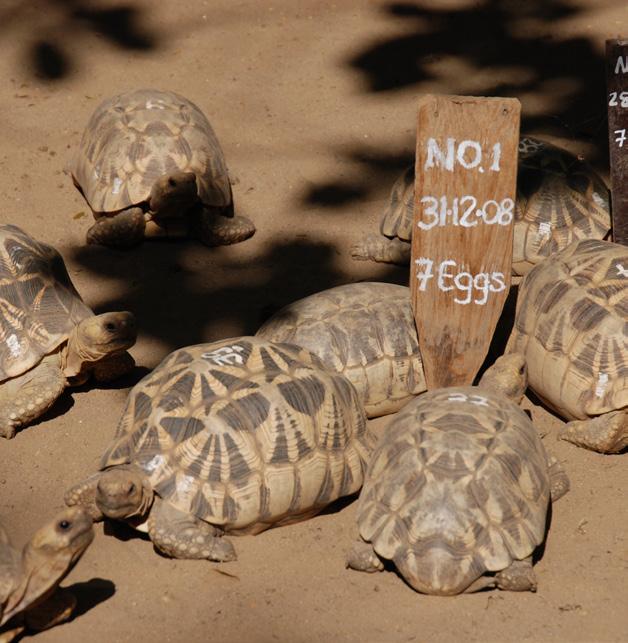

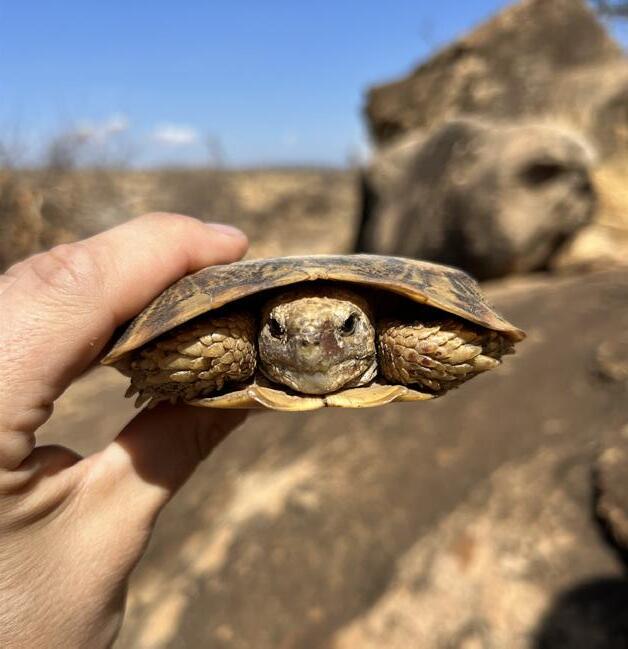
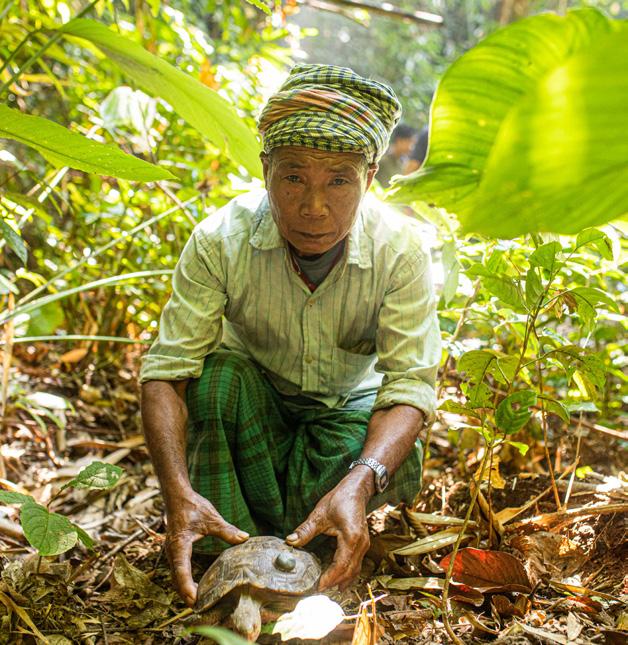
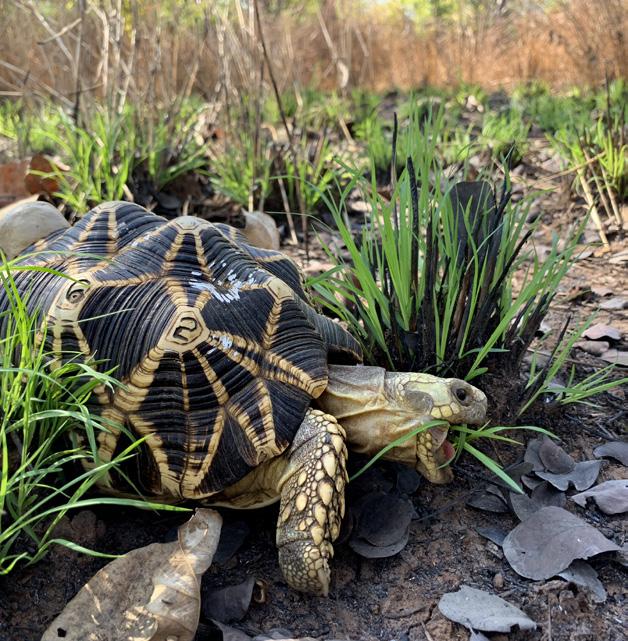



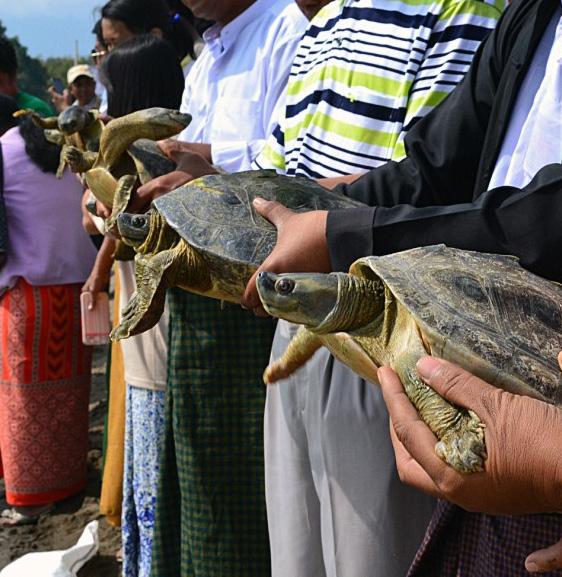
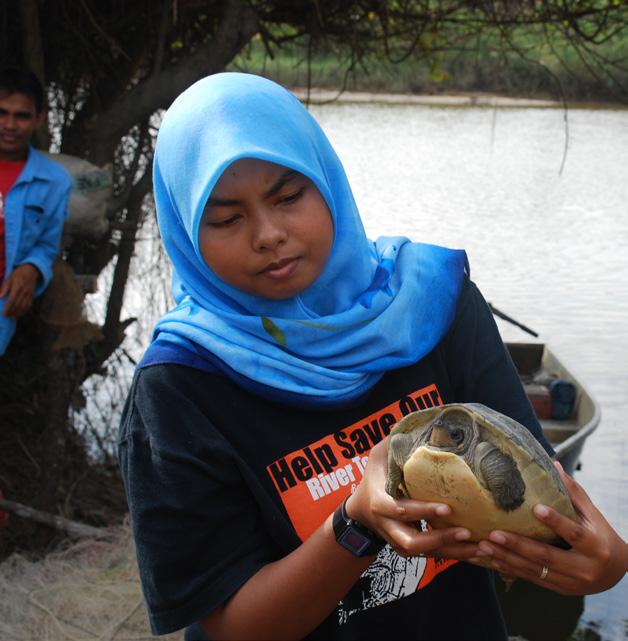


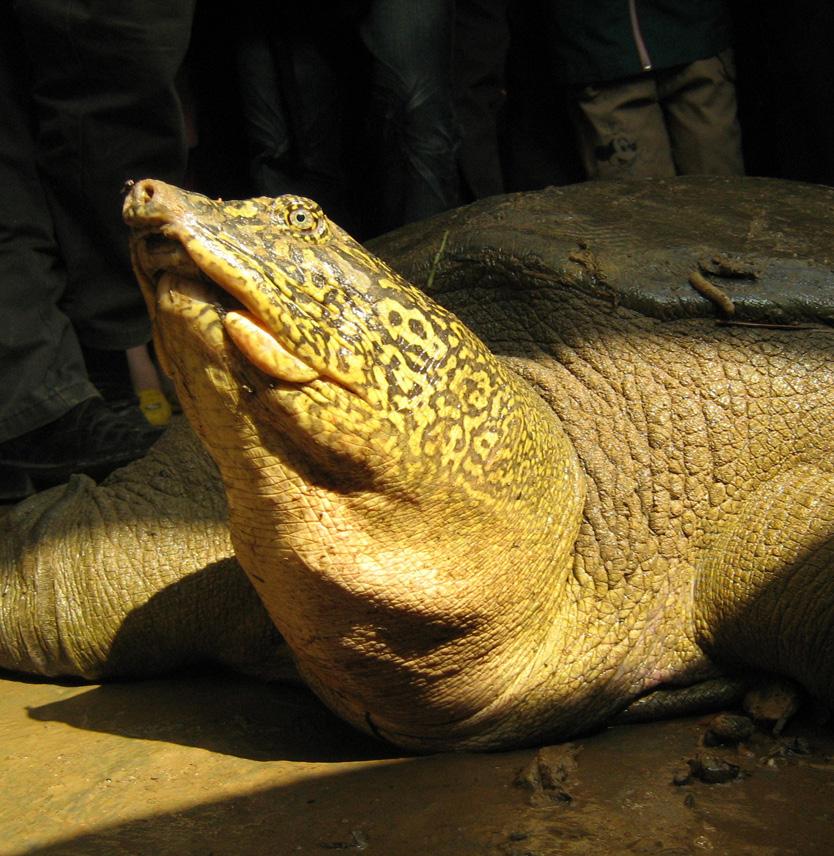







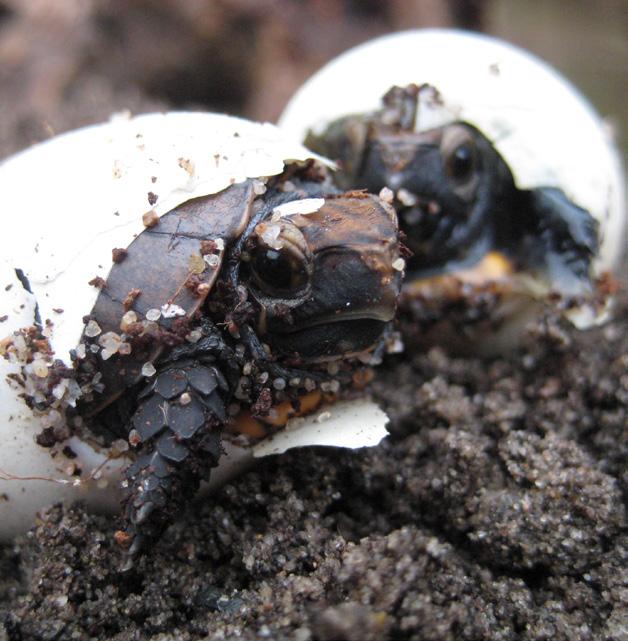
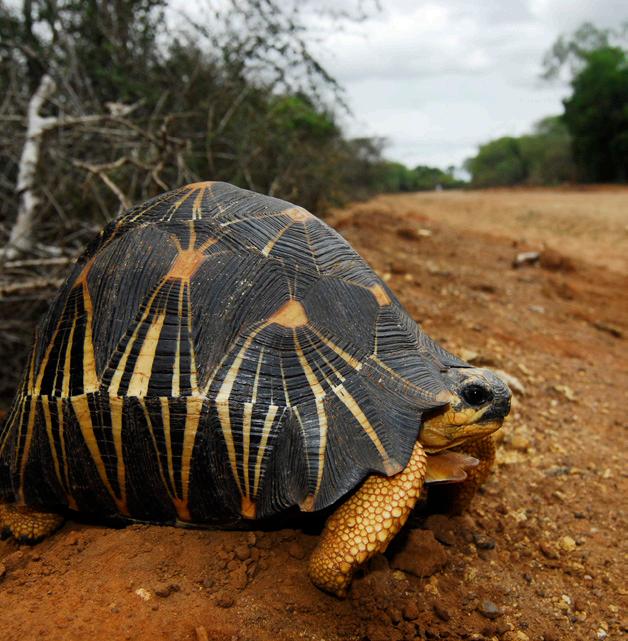
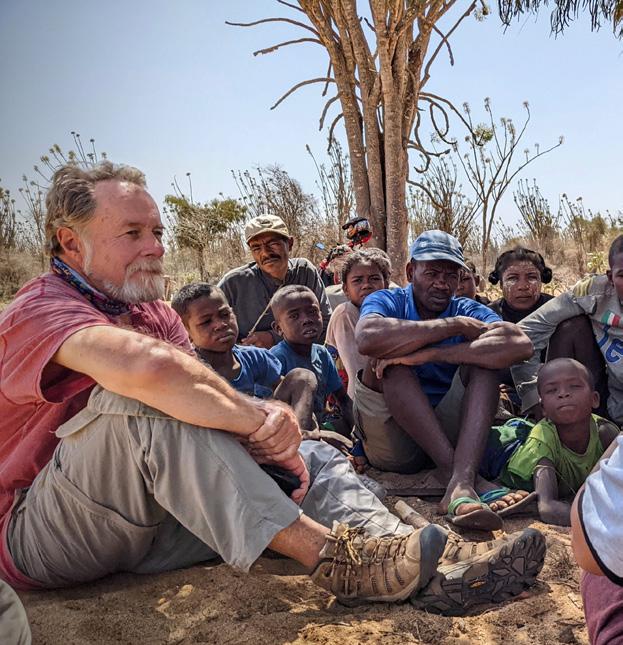

On May 11, 2004, Turtle Survival Alliance gained independence— officially registered as a stand-alone nonprofit—after operating under the auspices of the IUCN SSC Tortoise and Freshwater Turtle Specialist Group for the first three years.
It is with great pride and overflowing appreciation that this May we celebrate 20 years of our long-term, science-based initiatives worldwide. Our impact encompasses field research, rescue and rehabilitation, reintroduction, education and awareness, and engaging with communities across the globe. We’ve been on a wonderful journey of passion, innovation, commitment, and growth. These efforts are made possible by dedicated supporters like you.
Together, we’ve made lasting strides, and we hope you’ll continue to join us as we expand our efforts toward a future where every turtle species thrives in the wild. Here’s to the next chapter.
This year, Turtle Survival Alliance welcomed Josh Dale, Michael Gibbons, and Ilana Miller as new members of the Board of Directors. We also bid farewell to esteemed board members John Iverson, Vivian Páez (recipient of the 2022 Behler Turtle Conservation Award), and Satch Krantz as they conclude their terms. A special acknowledgment is extended to John Iverson, whose transformative contributions have left an indelible mark on our organization through his financial acumen and generous support. We are profoundly grateful for their service in advancing our mission to ensure the survival of turtle species worldwide.


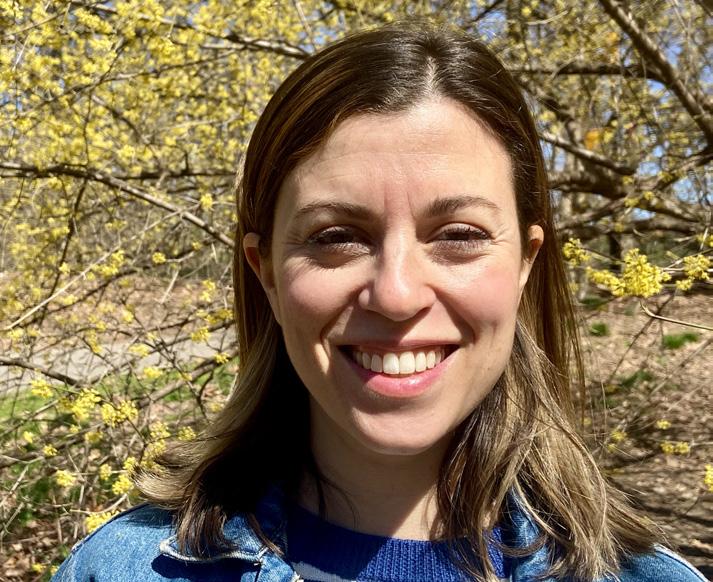
Josh Dale is a finance professional based in New York City. Having spent the past decade focused on the renewable energy sector, he is now the Head of Energy Transition at Rabobank, where he leads a team that supports companies and projects which are dedicated to bringing the energy industry to net zero emissions as soon as possible. Josh has been a passionate outdoorsman and lover of animals for as long as he can remember, making the conservation work at the Alliance a perfect fit.
Michael Gibbons is the Vice President of Corporate Strategies for Trident United Way, and has spent 15 years in nonprofit leadership. Prior to his career in nonprofits, Mike spent 15 years in journalism as a reporter, editor, and executive, and still contributes to a column part-time. Passionate for turtles from an early age, he began helping on his father’s turtle studies as a small child, and has continued to this day taking part in numerous amphibian and reptile volunteer initiatives.
Ilana Miller is a lawyer based in New York City with over 14 years of experience as a business litigator and general counsel. She currently serves as deputy general counsel at Selfhelp Community Services, a nonprofit organization dedicated to providing affordable housing and essential social services to vulnerable and elderly New Yorkers. Throughout her years of practice, Ilana has been actively engaged in pro bono matters, and committed to advancing diversity, equity, and inclusion initiatives. Ilana, a lifelong animal lover and outdoor enthusiast, thanks her mom for fostering her love for reptiles. She has numerous memories of rescuing injured animals and aiding wildlife sanctuaries and is grateful to be joining our conservation efforts.




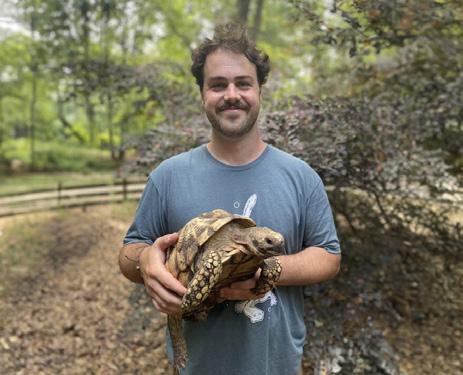


This year, Turtle Survival Alliance experienced growth, expanding our team by introducing new roles and inviting skilled, enthusiastic individuals to join our staff. This strategic initiative aims to allocate additional resources, time, and expertise towards our mission to protect and restore wild populations of tortoises and freshwater turtles. The following staff began in the timeframe of October 1, 2022, to September 30, 2023.
1
Natalia Gallego-García, PhD Director of Conservation Genetics
“Driven by a passion for conservation, I’m on a mission to empower conservation through genomics and chart a successful future for endangered species around the world.”
Natalia Gallego-García is a devoted conservationist and geneticist committed to utilizing cutting-edge molecular tools to steer global conservation efforts for threatened species. She holds a Bachelor’s degree in Biology, a Master’s degree in Ecology and Evolution with a specialization in computational biology, and a Ph.D. in Biology with a focus on conservation genomics. Before assuming the role of Director of Conservation Genetics at Turtle Survival Alliance, she served as a Postdoctoral Researcher at UCLA. During her time there, she conducted research into the effects of habitat loss and population fragmentation on Dahl’s Toad-headed Turtle, and delved into unraveling the intricate species complex of the Red-footed Tortoises in South America (see p. 16).
2
Ratri Lertluksamipun Director of Development
“My mission is to unearth and nurture a fascination and admiration for turtles that lives
in all of us, even if it’s yet to be discovered.”
With more than 10 years of experience in nonprofit administration, donor relations, and fundraising, Ratri has advanced missions for organizations in higher education, the arts, and healthcare industries. She was previously the Senior Alumni & Constituency Relations Officer for the University of Southern California School of Architecture and served as the Associate Director of Event & Corporate Fundraising at P.S. ARTS. Ratri is passionate about conservation, sustainability, and helping those in need—be it animal or human. In her role she provides opportunities for individuals, institutions, and corporate partners to fulfill their philanthropic intentions while supporting conservation action.
3
Abigail Bush Office Manager
“I am greatly inspired by the unwavering passion and tireless dedication that I have witnessed in conserving these amazing creatures. I am excited for the future of the organization to see what other feats we can accomplish.”
4
Elena Duran Communications Coordinator
“Using my experience and skills gained through my work in the nonprofit sphere to
advocate for a thriving future for turtles and tortoises has been a highlight of my career. I’m fortunate to be a part of this passionate, driven team of conservationists.”
5
A.J. Fetterman Chelonian Keeper
“It is a dream come true to be working to maintain the beautiful collection of turtles and tortoises at the Turtle Survival Center. I look forward to the future and am excited about my opportunity to aid in our goal of zero turtle extinctions.”
6
Makayla Peppin-Sherwood Grants Manager
“I’m so grateful to contribute to such an important mission. Empowering conservationists to protect these amazing turtles and tortoises is an honor and a privilege.”
7
Nita Yawn Chelonian Keeper
“The opportunity to spend hands-on time with critically endangered turtles has been both rewarding and humbling. Being part of a team who values and respects the lives of the creatures we share this planet with is what makes all of the hard work and effort worth it.”

“In celebration of the Turtle Survival Center’s tenth anniversary, we are delighted with the progress that the Center has made in fulfilling and exceeding its captive management goals. With mild winters and warm summers, the subtropical region in which Cross, South Carolina, is located makes it ideal for the management of assurance breeding colonies for numerous species of endangered turtles. There, the Center has become a hub for research, innovation, and education. From collaborations with academic institutions and local student involvement to hosting and sharing knowledge with experts around the world, the Center is where conservation meets compassion.
As founding donors, we take pride in the Center’s plans to expand its assurance colonies and to bolster its genetic bank to maintain healthy populations. We believe that these efforts are vital to the shared goal of our Foundation and Turtle Survival Alliance for preventing turtle and tortoise extinctions. It stands as a testament to our lifelong commitment to conservation. At this critical time for biodiversity, we renew our pledge to safeguard these efforts, ensuring a future where turtles and tortoises thrive in the wild.”
-Alan and Patricia Koval Foundation
The
Jay Meredith Turtle Survival Center has produced nearly 100 hatchling Indochinese Box Turtles (Cuora galbinifrons) since 2016.In the Lowcountry of South Carolina, about 40 miles from the closest city and located off a long, winding, gravel road, sits a gated property. Behind the unassuming chain-link fence and imposing black gate, inconspicuously warning people to keep out, lies a world unseen by most passersby. There are no signs or flourishes hinting at the remarkable activity within.
This sight is familiar as I pull up to the gate and, with a swipe of my access card, wait for the automated voice to say, “Wel-come. Chel-sea.” The gate opens, and just around a slight bend, a shiny new sign finally alerts visitors to what waits beyond—the Turtle Survival Center—a vibrant hub of turtle conservation. This wondrous 51-acre property safeguards some of the world’s most endangered species of turtles and tortoises from extinction while doubling as a protected area for native turtles and other wildlife.
This year, the Turtle Survival Center (TSC), or the Center, as it’s often called, celebrates a decade of operation and success since “opening its doors,” though not publicly, as Turtle Survival Alliance’s ex situ breeding facility. Today, I’m sitting down with Cris Hagen, the Center’s Director, and Clint Doak, Assistant Curator, to chat about the facility and their anniversary celebrations. As a fellow Turtle Survival Alliance employee, I’m familiar with the Center but excited to delve deeper and share its incredible ten-year history.
Turtle Survival Alliance (the Alliance) was founded in 2001 as an IUCN/SSC partnership network and working group for sustainable captive management of tortoises and freshwater turtles and became an official tax-exempt nonprofit organization in 2004. Beginning with a very small budget, and no paid employees for many years, turtles were managed by volunteers through taxon management groups at multiple facilities. The need for a committed group of employees and a dedicated base of operations became evident to manage these critical assurance colonies.
In 2012, the Alliance began a fundraising campaign, and the following year purchased the property that is now known as the Turtle Survival Center. Unfortunately, converting the property from a crocodile conservation center, building new enclosures through severe weather and ex-

 Nickie Stone, © Garden & Gun
Nickie Stone, © Garden & Gun

tremely wet and muddy conditions, was not a walk in the park. The tenacity, innovation, and do-it-yourself engineering needed in these first months laid the groundwork for facing and overcoming the many obstacles that come with running a world-renowned conservation center in subtropical, coastal South Carolina, and is the literal foundation on which the Turtle Survival Center is built.
Today, the TSC is a flourishing center with the purpose of maintaining genetically diverse colonies of critically endangered turtles for future generations and the hopeful restoration of populations in the wild; a living ark, or genetic bank, for species that currently have little to no chance of survival in their natural habitats.
“We have species that are disappearing from the wild and the only way to secure their existence is to maintain captive colonies—our purpose is to do that in a scientifically managed way,” says Cris.
As the Center’s Director, Cris manages the population of animals at the Turtle Survival Center but also those that are part of a larger collection plan. The Alliance coordinates its work with Association of Zoos and Aquariums (AZA) institutions, other conservation organizations and educational institutions, trusted individuals, and Turtle Survival Alliance
members to extend the population beyond the gates of the TSC. This large-scale effort helps to meet population and genetics goals and also keeps the last proverbial eggs of a turtle species from being in one basket. As of this year, the Center houses 28 species onsite, with 20 of those actively being managed as part of the larger collection plan.
The Center cares for a diverse array of turtles, most of which are considered Critically Endangered, with a few priority species that are thought to be functionally extinct— and possibly completely extinct—in the wild, and some that have never been seen by turtle biologists or researchers in their native habitats. Turtles like the Zhou’s Box Turtle (Cuora zhoui), McCord’s Box Turtle (Cuora mccordi), Rote Island Snake-necked Turtle (Chelodina mccordi), Vietnamese Pond Turtle (Mauremys annamensis), Red-necked Pond Turtle (Mauremys nigricans), and Yellow-headed Box Turtle (Cuora aurocapitata), are only surviving because of the
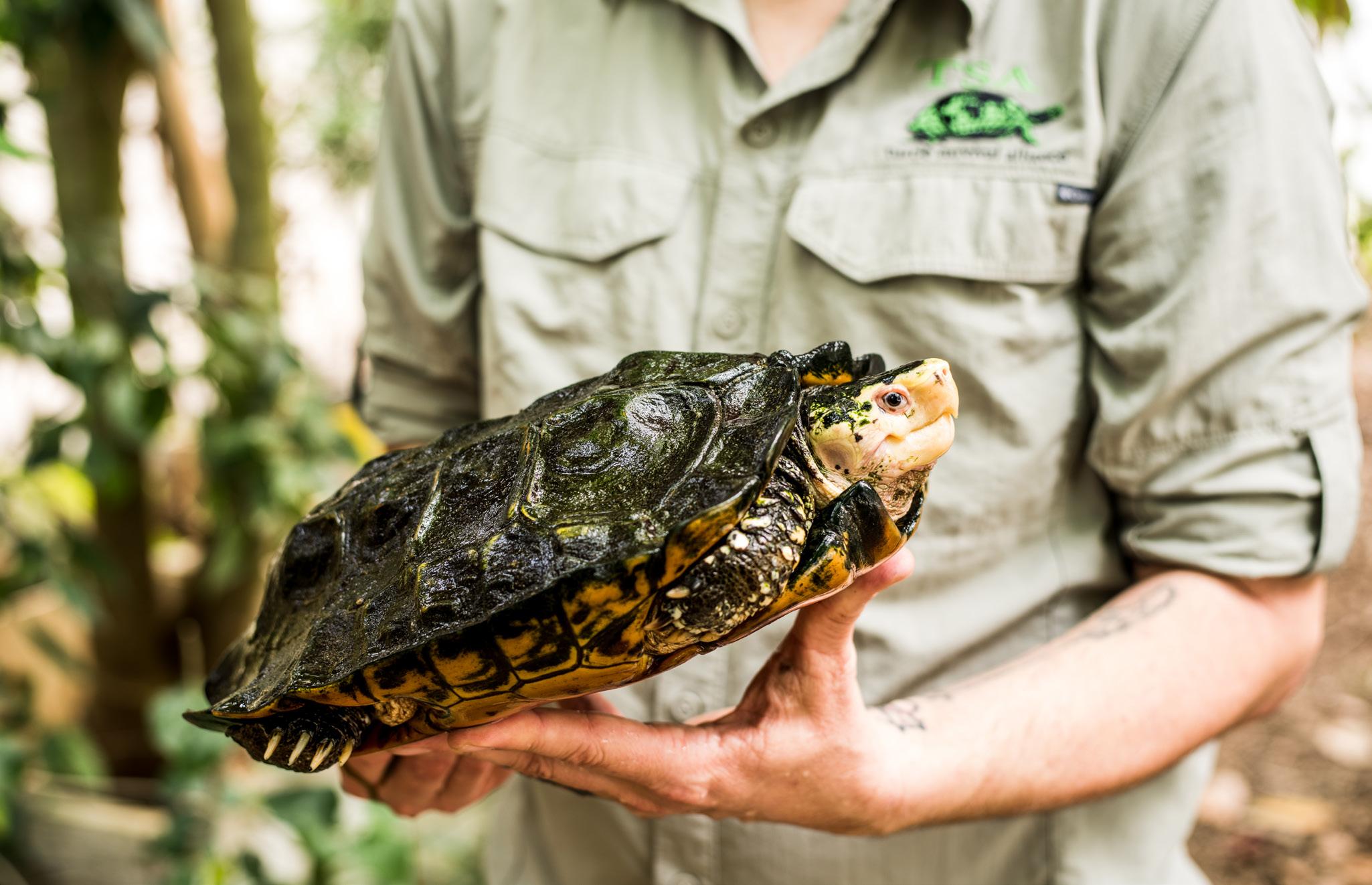
highly specialized conservation work being done at the few facilities like the Turtle Survival Center.
Also residing at the facility are representative ambassadors for species that have major conservation success stories, like the Burmese Star Tortoise (Geochelone platynota), whose comeback from the brink of extinction is nothing short of extraordinary.
Over the past ten years, the Turtle Survival Center has become a beacon of hope for imperiled turtle species, fostering genetically healthy populations and contributing significantly to global species conservation and preservation.
The Center stands out as a driving force in turtle survival across the globe. “Turtles play a vital role in our ecosystems, and we’re stepping up in a large-scale capacity to save them—we’re trying to be a catalyst for change,” says Clint, who considers the Center to be a leader among others of its kind for its grand-scale science-based conservation efforts.
The role that the Center plays in the future survival of some of the world’s most endangered turtles is vital. And when you take into account the revolving door of obstacles the facility has had to overcome, including intense weather conditions, staff transition and retention, and limited space and resources, the rate of success has been remarkable.
When asked how they’re measuring success, the metrics were broken down into four categories: expansion of the colony, maximizing genetic diversity, creating pathways for returns to the wild, and shared knowledge and training.
Tracking and measuring the number of turtles in the collection, and increasing the population numbers in a scientifically-managed way.
The number one way the Center ensures the survival of the world’s most endangered turtles is by continuing to build the ark. Each turtle hatchling breeds new hope for the future of their species. Cris says that successful breeding “indicates that we know what we’re doing, and it’s one of [the] ultimate goals of a conservation management breeding center.”
It also means that they’re creating an F1 population, the first generation, and step, in creating a genetically diverse population of hardy, captive-bred animals that will ensure the future of this population.
The TSC has seen such incredible breeding success and exponential growth that the current infrastructure is now limiting the population. “We’re at a point right now where we can’t really continue to grow the population anymore,
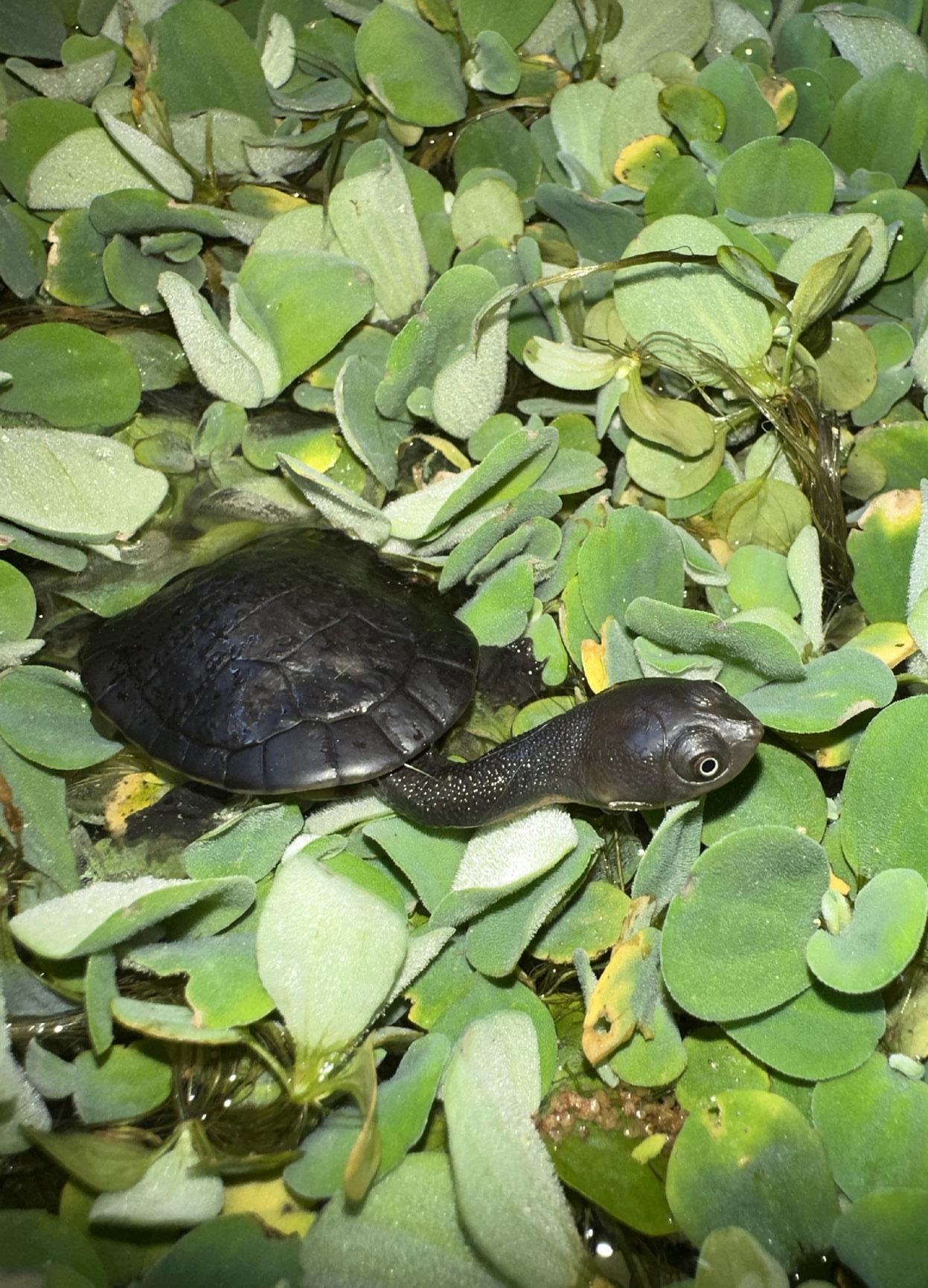
until we grow the facilities,” says Cris.
The Center staff can boast more than just population growth. The facility has been able to unlock the secrets for some of the most historically difficult-to-breed species, like the Indochinese Box Turtle (Cuora galbinifrons) and the Sulawesi Forest Turtle (Leucocephalon yuwonoi). This knowledge can then be shared with other facilities, field country programs, and conservation partners.
Ensuring that the genetic potential of the population is maximized by monitoring genetics and keeping studbooks.
The Center’s commitment to genetics research is equally as impressive as its population growth. Through population genomics work with experts like Natalia Gallego-García, Turtle Survival Alliance’s first Director of Genetics, they’ve been able to make the most informed breeding decisions—i.e., who to pair with whom—to maximize gene diversity of the captive population over multiple generations and foster healthy offspring.
Every one of the nearly 800 turtles housed at the Center
From left: This Rote Island Snake-necked Turtle (Chelodina mccordi), hatched at the Center, may one day be part of a program to repatriate this species to its native habitat; The Yellowheaded Box Turtle (Cuora aurocapitata) was among the first species to reproduce at the Center, like this one hatched in 2015; The Center has had prolific success in breeding the McCord’s Box Turtle (Cuora mccordi), a species presumed extinct in the wild. This is one of 42 hatchlings produced since 2017.
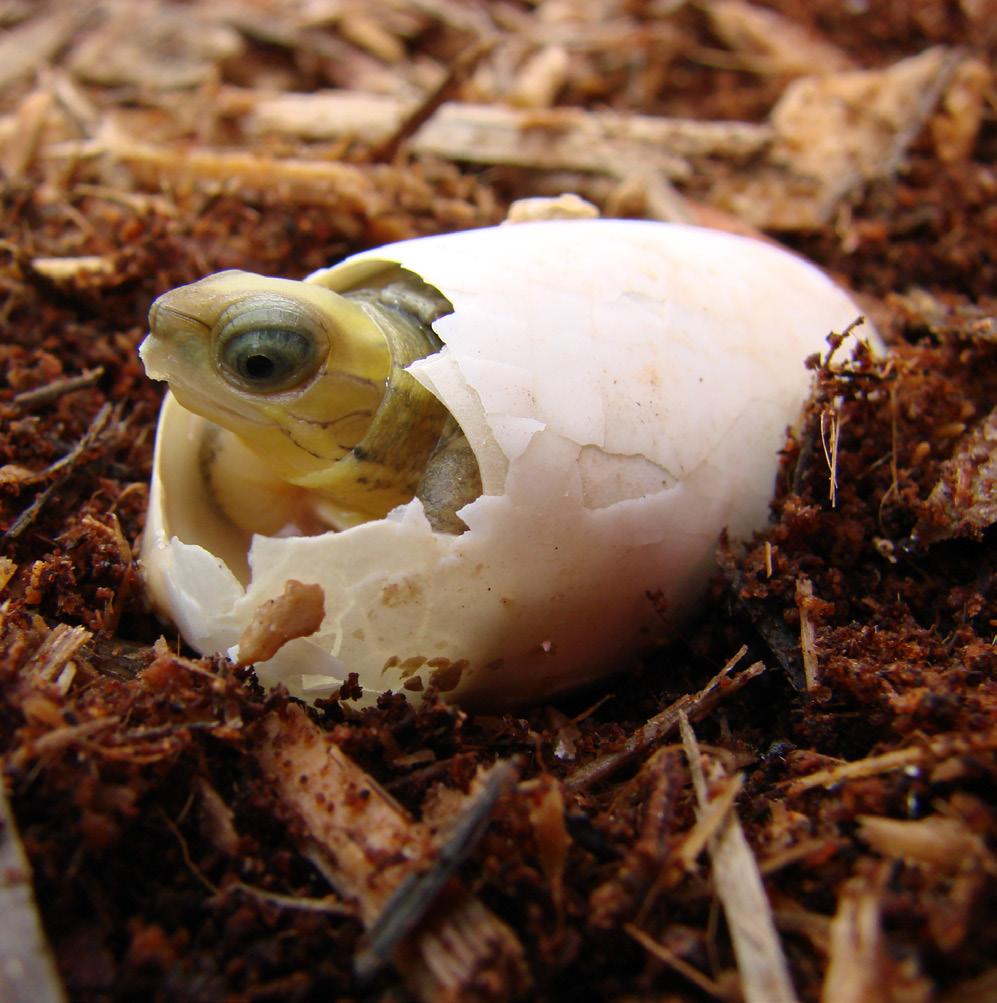
represents a vital genetic link for the future. This year alone, multiple genetic analyses have been conducted to optimize breeding moving forward. This approach has identified some cryptic hybrids in the population and, with kinship analysis, has also helped to make informed determinations of individual pairings for breeding.
To maximize diversity, bloodline exchanges routinely take place with other facilities in the larger managed collection. The Center has even conducted bloodline exchanges with facilities as far as Europe.
Measuring the impact the TSC and the Alliance have on its peers by tracking the number of people trained and/or hosted for research.
The trials and successes at the Center in the last decade have become teachable moments. The knowledge that TSC staff have gained over the years has led to a working knowledge of biology, husbandry, and population management and they’ve been sharing their knowledge with others.
Locally, the Center has offered facility tours for colleges, hosted volunteer groups, and run an internship program, all aimed at inspiring the next generation of turtle conservationists. Additionally, they’ve presented at conferences and participated in local community outreach and school career days. This creates a pipeline of passionate individuals who can one day lead the charge in protecting turtles from extinction.
On a broader scale, the TSC has shared its expertise with other Turtle Survival Alliance projects and programs, as well as partner organizations and peers, promoting best practices for turtle reproduction and species survival across the globe.
This year, the Turtle Survival Center finally launched a long-awaited course on Turtle Biology, Conservation, and Management, co-sponsored by the AZA Chelonian Taxon Advisory Group. Held on TSC grounds, the course brought together some of the field’s most renowned experts for a unique exchange of knowledge and experience. This dedication to education and collaboration lies at the heart of the Center and Turtle Survival Alliance’s mission.
Determining if species can be successfully restored or reintroduced to the wild, and implementing a plan of action.
A prime example of this is the Rote Island Snake-necked Turtle (Chelodina mccordi), a Critically Endangered species native to the islands of Rote and Timor in Indonesia. Hatchlings born at the Center are carefully monitored and given the best chance of survival. Some will remain for breeding purposes, while others may be sent to zoos and aquariums accredited by the AZA to contribute to their Species Survival Plans. Most excitingly, some individuals may eventually be part of a Wildlife Conservation Society repatriation program, where they will be prepared for reintroduction back to their native habitat on Rote Island.
This is Turtle Survival Alliance’s ultimate goal, to see turtles once again thriving in the wild. The Turtle Survival Center’s breeding triumphs, genetic advancements, collaboration, and education, have paved the way for future success and for the future generations of turtles.
A decade of research, breeding, and hatching has resulted in astonishing results: 950 hatchlings produced from 27 species and subspecies, over 750 chelonians currently residing at the Center, 530 total turtle habitats among indoor and outdoor complexes, 4,200 square feet of construction among three climate-controlled buildings, and $4.2M raised for the Center since its inception.
So far, the Turtle Survival Center and its staff have accom-
plished goals above and beyond expectations. Imagine what can be accomplished in the next decade and beyond.
“As we look ahead to the future of this facility… our work is far from done,” says Clint.
And with the fluidity of a living collection plan, there are still so many options for the direction of expanding the collection. “We can look into the future, broadening our species outside Asia and North America. We’d like to bring in mainland African species, Madagascan species, and [help] the AZA SAFE: American Turtle Program with confiscations of North American species,” says Clint. “With the right resources, the possibilities are endless.”
Acknowledgments: AAZK Detroit, Alan and Patricia Koval Foundation, Andrew Sabin Family Foundation, Anonymous, The Arthur L and Elaine V Johnson Foundation, Barbara B. Bonner Charitable Fund, Bob Olsen, Brian Bolton, California Turtle and Tortoise Club, Columbus Zoo and Aquarium, Cris Hagen, Dallas Zoo, David Shapiro, Dennis Coules, Dennler Family Fund, Detroit Zoo, Felburn Foundation, Gregory Family Charitable Fund, Houston Zoo, Jacksonville Zoo and Gardens, John Iverson, Mazuri Exotic Animal Nutrition, Nashville Zoo at Grassmere, Oklahoma City Zoo & Botanical Garden, Omaha’s Henry Doorly Zoo & Aquarium, Post and Courier Foundation, Riverbanks Zoo & Garden, Roy Young, Saint Louis Zoo, San Diego Zoo Wildlife Alliance, Sedgwick County Zoo, Tennessee Aquarium, The Tides Foundation, Tracks Data Solutions, Virginia Zoo, Walter Sedgwick, Wildlife Conservation Society/Bronx Zoo, William and Jeanne Dennler, Zoo Atlanta, and Zoo Med Laboratories.
*Contributions of $5,000 or more since January 1, 2013
Contact: Chelsea Rinn, Turtle Survival Alliance, Turtle Survival Alliance, 5900 Core Rd., Ste. 504, North Charleston, SC, USA 29406 [crinn@turtlesurvival.org]
 Jordan Gray
Jordan Gray
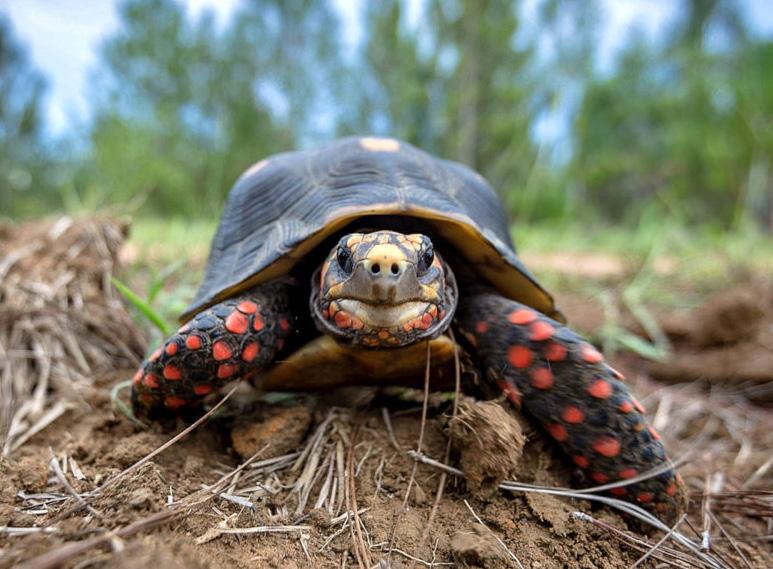
Employing Genetics to Optimize Conservation Efforts
by NATALIA GALLEGO-GARCÍASuppose you have limited resources, and you wish to protect a species that spans a large geographic area. Where will you implement your conservation actions? How can you ensure that these efforts extend beyond the local population to impact the species as a whole? Those are the questions that genetic data can answer. Genetics can help direct resources where they can have the greatest impact. How, exactly? Well, it allows us to understand if the species is divided into neighborhoods or populations—known as Conservation Units (CUs)—and to identify the key ones to protect.
There are different types of CUs, and a key one is the Evolutionary Significant Unit (ESU). These are groups of individuals that are separated either by geography or because they can’t easily mate with each other. They have their own unique evolutionary histories and special traits that help them survive in their specific environments. Some-
Red-footed Tortoise (Chelonoidis carbonarius) exhibits remarkable morphological variation throughout its range, leading scientists to believe that it may not be a single species, but rather a complex of multiple species that have not yet received proper taxonomic recognition.
times referred to as subspecies, ESUs are genetically and ecologically so different that we manage them separately. An ESU may encompass one or more Management Units (MUs). Often referred to as populations, these are independent groups that have very few individuals moving in or out of their local area. We use these units to delineate the minimum scale for conservation, as management actions implemented in one MU won’t have an effect on another. Sometimes, MUs are located in different environments, which can lead to individuals developing unique traits to help them survive in those specific places. When this happens, we call them Adaptive Units (AUs), and we make sure to take those differences into account when planning conservation strategies.
Let’s see how CUs are used to design conservation strategies. The Red-footed Tortoise (Chelonoidis carbonarius) is a species with one of the largest ranges in the world, spanning approximately 2 million square miles (5,100,000 km2) and encompassing all countries in South America except for Ecuador. This species exhibits remarkable morphological variation throughout its range, leading scientists to believe that it may not be a single species, but rather a complex of multiple species that have not yet received proper taxonomic recognition. But here’s the tricky part: figuring out exactly how many species of Red-footed Tortoises there are and where they all live takes time. And while scientists are busy working on this task, these unnamed tortoise groups could be slipping through the cracks, getting closer and closer to extinction without

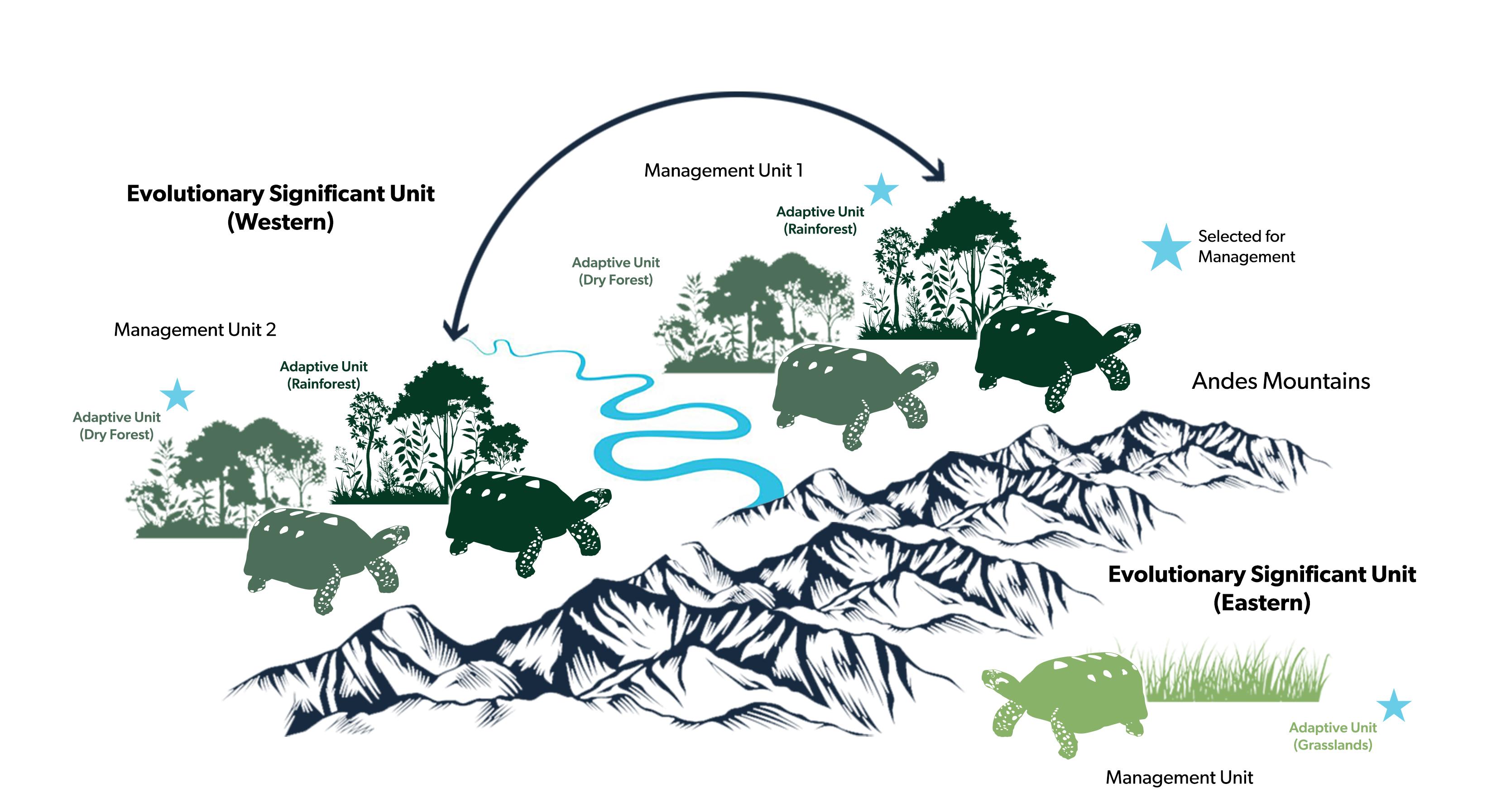
anyone even realizing it. This is when delineating CUs becomes handy, as it allows managers to acknowledge these distinct groups for the sake of conservation, even if they haven’t been formally classified yet.
This approach was adopted in Colombia, where two distinct lineages of the Red-footed Tortoise are found, each located on opposite sides of the Andes Mountain Range. Recent studies have shown that these groups aren’t just different in where they live—they’re genetically and ecologically unique. On the western side of the Andes, tortoises live in the forest, while their counterparts on the eastern side dwell in grasslands. These tortoises are now adapted to their specific environments and cannot interbreed as the Andes act as a reproductive barrier. Because of these significant differences, scientists designated these eastern and western groups as ESUs. Within the eastern ESU, a single MU was identified, while the western ESU comprised two. But wait, there’s more! Further genetic studies showed that tortoises living in the rainforest had evolved special traits to deal with the humid conditions, while those in the dry forest had their own adaptations. So, within each western MU, scientists identified smaller AUs based on these habitat-specific traits.
Based on this fine-scale delineation of CUs, the conservation plan to save the Red-footed Tortoises in Colombia was shaped. The goal? To protect as much genetic diversity as possible while minimizing the number of units, streamlining conservation efforts. In the east, the focus was directed towards conserving the single MU, representing the entire
ESU in that area. In the west, conservation efforts were targeted at two distinct Adaptive Units: the dry AU from one management unit and the rainy AU from the other.
This strategic approach narrowed down conservation actions from an entire country to just three sites! And there’s more; it also helped plan out relocation efforts, like moving tortoises to areas where they have been wiped out. Why is that important? Because relocating tortoises isn’t as simple as it sounds. We’ve got to be careful not to mess things up by moving animals between different ESUs or AUs. That could lead to some serious problems, like the tortoises not being able to adapt to their new environments or struggling to survive. To avoid these risks, translocations were restricted to occur only within each ESU and between equal AUs— dry to dry and rainy to rainy. Genetics is a powerful tool to optimize conservation strategies. CUs are but one example; the possibilities are endless.
Acknowledgments: This work received financial and technical support from the Wildlife Conservation Society - Colombia, the Shaffer Laboratory at UCLA, and the Biodiversity and Conservation Genetics Group at the National University of Colombia. We thank Tim Gregory for his generous donation that made this research possible.
Contact: Natalia Gallego-García, Turtle Survival Alliance, 5900 Core Rd, Ste. 504, North Charleston, SC, USA 29406 [ngallego@turtlesurvival.org]
As a child, I was constantly fishing. Always observant, I quickly hid when boats filled with fishermen came near. I clearly remember one group in a fancy Jon boat. They had an odd way of fishing using ropes. Two men would shake the ropes as if they’ve hooked a giant fish and the others would then jump in the water. When those who jumped in returned to the boat, I heard a loud “bang” as if a rock fell into the hull. When I looked more closely, I saw a large turtle. I winced as the men shouted in triumph. Here I was witness to the poaching that has led to the dramatic decline of the Central American River Turtle (Dermatemys mawii), known locally in Belize as the Hicatee.
It was also during my youth along the Belize River that I vividly recall sitting on a cliff as I watched a huge, dark brown shell surface. I heard a sharp sound as it quickly released air and then torpedoed back down to the river’s
depths. The Hicatee is a unique species with a complicated physiology. At the time, I didn’t understand why they weren’t on land and always thought they were mysterious. I now know that the Hicatee is so adapted for an aquatic existence that it has evolved to draw water into its mouth and absorb the dissolved oxygen from it before expelling the water through its nose, allowing them to stay submerged for a prolonged period of time. The Hicatee is not only mysterious, but an incredible example of evolution.
Animals in the wild today don’t seem to behave like they did when I was ten; they appear to act more wary of human presence. Now, on a clear day, if I see a Hicatee, I stay very still when it comes up to breathe, because any sign of movement causes it to disappear.
It’s not just the animals’ behaviors that have changed, so too has the landscape. The forested trail I walked as a kid no longer exists; it has been replaced by a corn field. Here and now, there are no trees until I reach the riverbank, a ribbon of green riparian forest barely twenty feet in width hugging the water. What I see are large pipes releasing effluents into the river, banks degrading, garbage accumulating, herons and cormorants caught in nets and fishing line, the water a less vibrant green, and animals missing on the trails I once enjoyed. Observing all these losses breaks my heart. I wonder, will there be sustainable efforts to restore these ecosystems and the animals that depend on them?

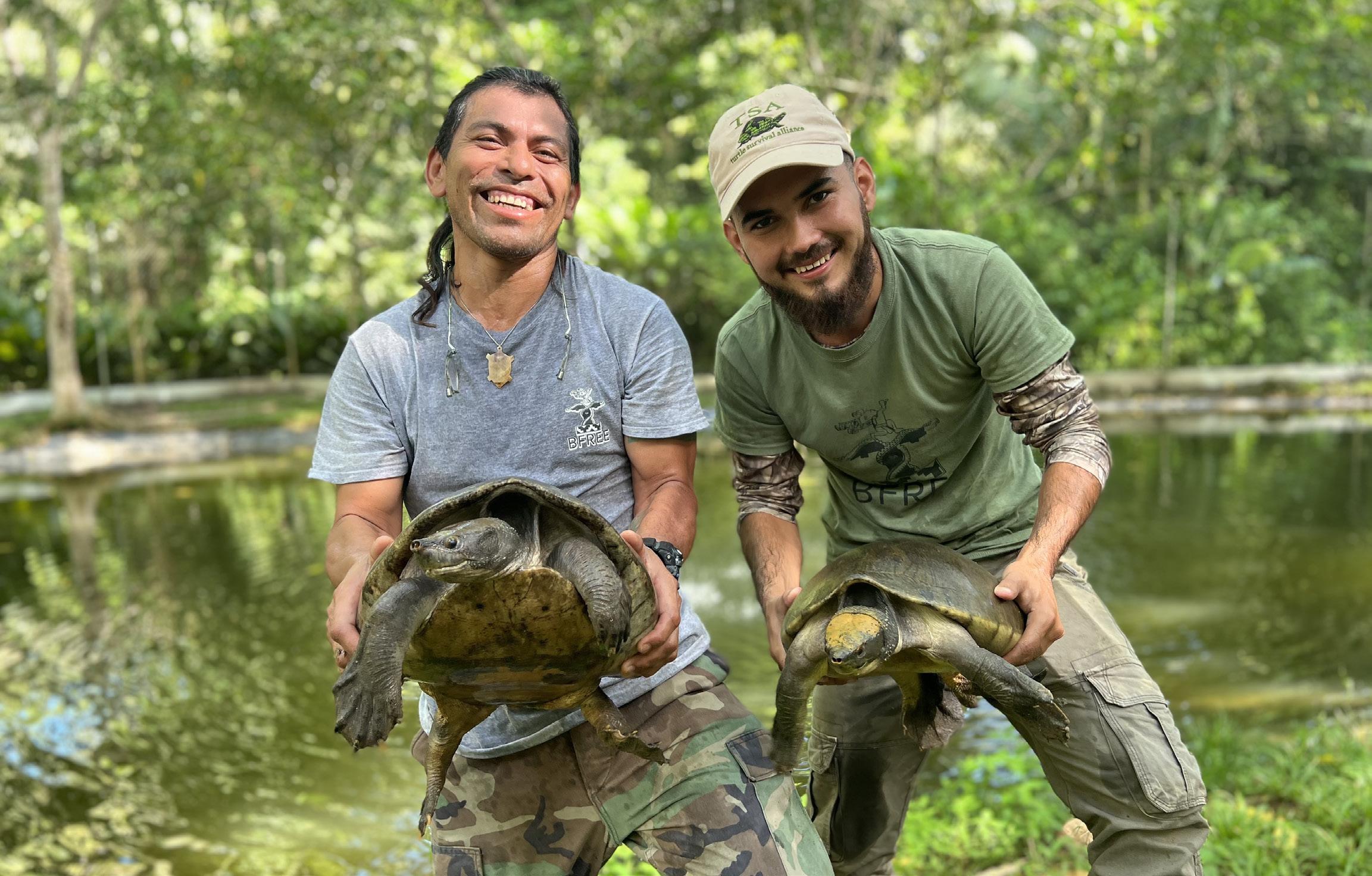
Working with the Belize Foundation for Research and Environmental Education (BFREE) has allowed me to develop a mindset of conserving Belize for future generations. My work at BFREE is focused on the Hicatee Conservation and Research Center (HCRC), which was created in partnership with Turtle Survival Alliance in response to catastrophic declines in Hicatee populations due to increased and unsustainable harvesting for human consumption.
At the HCRC, we facilitate and promote research on the biology and ecology of Hicatee, focusing on such aspects as breeding and nesting behaviors, dietary needs, growth rates, as well as pathogens and parasites. Through captive breeding efforts at the Center, we have hatched and raised over 1,000 turtles and released over 500 into the wild. We offer volunteer opportunities and training associated with our facility, and host meetings and symposia to help further collective knowledge on the species.
BFREE has established Hicatee Awareness Month—the largest outreach campaign for the species. We engage young minds and the general public via events, media, and school programs to create awareness and encourage community action. We are also gearing up for the launch of our
field research team, where we will offer opportunities for others to collaborate and assist in the field work once we get started. Together, we will gather the data needed to better understand the species and its current distribution in the wild. Our ultimate goal for the Hicatee is to see it once again thriving in self-sustaining populations in its native habitat.
As for me, I won’t stop dreaming of the day when I return to the cliff of my youth and see my beautiful Belize as it once was and can be again: rich and lush in all its natural glory.
Acknowledgments: We would like to acknowledge Turtle Survival Alliance, Zoo New England, David and Jean Hutchison, the Alan and Patricia Koval Foundation, Wildlife Conservation Society, and two anonymous donors for their ongoing support of this project.
Contact: Barney Hall, Belize Foundation for Research and Environmental Education, P.O. Box 129, Punta Gorda, Belize [wildlifefellow@bfreebz.org]

During our university years, fate intertwined our paths and forged a friendship that endures to this day. Since 2017, this friendship has grown even stronger thanks to our shared commitment: the conservation of our beloved Chaco Tortoise (Chelonoidis chilensis).
The Chaco Tortoise stands as an emblem of Argentinian Patagonia’s unique biodiversity. As the southernmost continental tortoise species globally, found from southwestern Bolivia to northern Patagonia in Argentina, its conservation holds paramount importance. The Patagonian population is seriously threatened by habitat modification by livestock (mainly cattle), predation by exotic predators (feral dogs and
wild boars), illegal local pet trade, bushfires, and climate change. Additionally, the Chaco Tortoise’s eggs have an unusually long incubation period of 10 to 16 months, leading to prolonged vulnerability of nests and reduced recruitment of new animals into the population. So, since 2017, we have been tirelessly monitoring this endangered species, unveiling the multitude of threats it faces in its habitat.
Chief among these threats is the Pomona Water Canal, a 121-mile (195-kilometer) predominantly concrete structure snaking across the Patagonian plateau to supply water to the cities of San Antonio Oeste and Las Grutas. Despite its utilitarian purpose, the canal has inadvertently become a death trap for numerous native species, including the Chaco Tortoise. The smooth, high, and steep walls of the canal render escape all but impossible for animals drawn to its waters, leading to tragic drownings.
Realizing the urgent need to address this issue, we embarked on a multifaceted approach. With support from Turtle Survival Alliance, Fundación de Historia Natural Félix de AZARA, Turtle Conservation Fund, and the Rufford Foundation, and the collaboration of more than 20 volunteers and scientific researchers from across the country, we decided to launch rescue missions to save tortoises


impact on native fauna.
Strategic placement of camera traps in some sewers along the canal revealed a diverse array of species utilizing it as a wildlife pass, from wild cats and foxes to armadillos and skunks. However, conspicuously absent were the tortoises, underscoring the likelihood that the tortoise population has possibly remained separated for more than 50 years. This long separation prevents genetic exchange between the sides of the canal, leading to ecological and genetic consequences, such as a reduction in genetic diversity.
With a clear understanding of the challenges at hand, we formulated a meticulous plan of action. Wildlife surveys would be conducted along the canal during the tortoises’ active season, enabling the mapping of vulnerable hotspots and the precise timing of conservation efforts. Moreover, innovative barrier designs and escape structures would be deployed and rigorously tested onsite to mitigate the canal’s adverse impacts on wildlife.
Crucially, the team recognized the importance of community engagement in achieving their conservation objectives. Through a concerted awareness campaign, we aimed to rally local support for the protection of this iconic species and its fragile habitat. By fostering partnerships with canal administrators, wildlife authorities, landowners, and public officials, we sought to mobilize collective action toward sustainable solutions.
In essence, the efforts to mitigate the impact of the Pomona Water Canal on Chaco Tortoises and native fauna exemplify a holistic approach to conservation. Through scientific research, rescue operations, habitat management, and community involvement, we endeavor to secure a brighter future for the unique biodiversity of Argentinian Patagonia.
certain death. Over two seasons, hundreds of dead animals were removed from the canal, and more than 90 tortoises were successfully rescued.
However, the rescue efforts extended beyond mere extractions from perilous situations. Through monitoring tortoises using radio telemetry, researchers gained invaluable insights into the behavior, health, movement, and feeding habits of the tortoises. Remarkably, we even had the privilege of witnessing three females laying eggs.
Yet, the challenges persisted. The Pomona Canal not only posed a direct threat to individual animals but also acted as a physical and ecological barrier, impeding the natural movements and dispersal of wildlife, including Chaco Tortoises, across the region. Recognizing the gravity of the situation, we set out to comprehensively assess the canal’s
Acknowledgments: We thank Tim Gregory and Turtle Survival Alliance for logistical and financial support, and Fundación de Historia Natural Félix de Azara, Turtle Conservation Fund, and Rufford Foundation for funding. We would like to give special thanks to our volunteers: Aye, Leto, Ro, Kenya, Gabi, Lucia, Paula S., Paula A., Belén, Juan, Cami, Oliver, Santi, Juana, Agos, Jesi, Maxi, Ren. We extend additional thanks to Milton Perello, Maxi García, Sebastian Dalgalarrondo, Damian Cardeli, Germán Ferro and, of course, to the ranchers Peco Gastaminza, Martín Echave, Coco García, and Estela Nuñez.
Contact: Erika Kubisch, Consejo Nacional de Investigaciones Científicas y Técnicas - Centro Regional Universitario Bariloche, Universidad Nacional del Comahue, R8402AGP San Carlos de Bariloche, Argentina [ekubisch@comahue-conicet.gob.ar]
Swift conservation actions needed for the world’s smallest turtle
by TAGGERT BUTTERFIELDIt was Summer 2018 when I first got the news of a “A Distinctive New Species of Mud Turtle from Western Mexico.” I was sitting at my computer at the Chamela Biological Station in Jalisco, Mexico, just two and a half hours south of where this new species was described from in Puerto Vallarta. In this paper, familiar authors, but a very unfamiliar turtle was made known, the Vallarta Mud Turtle (Kinosternon vogti).
Not only did this newly published paper claim that this was a novel species described to science, but that it was one of the smallest species of its genus, and somewhat spectacularly, the males had a conspicuous bright yellow scale on their noses. My first thought was “this cannot be real” and that the yellow nose must be some kind of infection or abnormal growth that I have seen several times on the Mexican Spotted Wood Turtle (Rhinoclemmys rubida perixantha), a species that I had spent the last three years surveying in Chamela. I have also been to Puerto Vallarta many times on my way to Chamela, and it seemed to me more than likely that there was so much contamination in the city that perhaps the yellow nose was a result of a contaminate.
Intrigued and in disbelief, it wasn’t until 2019 that I finally had time to spend a few days in Puerto Vallarta and try to trap this new species of mud turtle. I was especially excited because I was going to be able to include this species as part of my PhD project that aimed to compare the morphology and ecology of different turtle species.
The first locality that I tried to trap this distinctive new species was the type locality, or the locality of the first individual used to describe the species. To my surprise, this locality was directly in front of a shopping mall on a very busy street in Puerto Vallarta. The potential canal where it could have been found was lined with cement and bone dry. So, if I couldn’t put traps in this canal, where was I going to find this turtle?
I made my way upstream along the canal to a river where I found water access behind some houses where there was an apparent homeless encampment. It did not seem like a safe place to leave traps, but I made a deal with two of the individuals living in the encampment that if they watch my traps, I will give them each 100 pesos the next
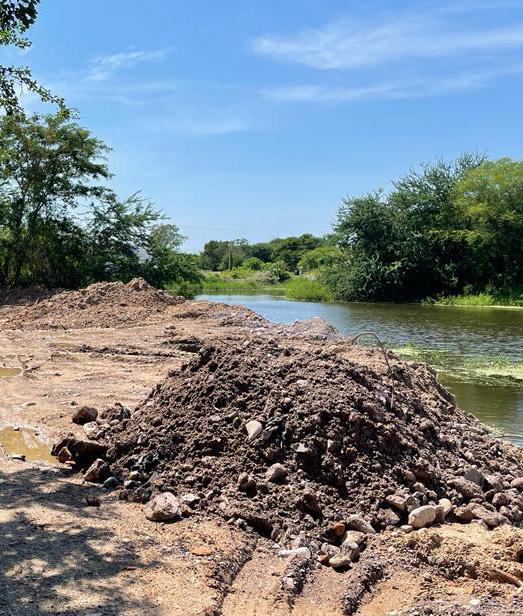
day. They assured me that the traps would be safe. Their word, though, did not give me confidence. I could barely sleep that night, imagining that all my traps would be stolen, but sure enough, at 7 AM, when I went to check the traps, the two individuals were still there, wide awake, and had been keeping an eye on the traps all night. There were no turtles in any of the traps, but I still had the traps, and a deal was a deal, so I paid each individual 100 pesos.
Five years, 600 trap nights, and 40 localities later, this first experience next to the river encapsulates what it has been like to sample for this species: stress, paranoia, and uncertainty that my traps would be stolen. Indeed, on three occasions I have had traps stolen, and to this day I still have trouble sleeping on nights that I have traps out in Puerto Vallarta or the surrounding areas. But, at least we now know


the dire situation this turtle is in. On my first three visits to Puerto Vallarta in 2019 and in 2021, I did not trap the Vallarta Mud Turtle. Not only was it extremely exhausting to track down landowners and get the necessary permissions to trap almost any locality in the valley, but with each unsuccessful trap night the situation looked more grim. I grew extremely concerned that this turtle might have disappeared before we even got the opportunity to learn anything about its biology, and I had a hard time imagining where this turtle could possibly exist if it was not in the numerous localities where I had tried to trap it.
Today, we know that this species is restricted to very specific habitats and that these habitats comprise less than 49 acres (20 hectares). To make this worse, Puerto Vallarta and its surrounding areas are one of the fastest-growing areas in Mexico and one of the most popular tourist destinations in the world, making land more valuable than gold. One acre of land costs upwards of a million dollars.
So will the Vallarta Mud Turtle go extinct in the wild? All of the habitats where the Vallarta Mud Turtle persists are surrounded by highways or busy roads and are destined for development. While there is a slim chance that land will
be able to be purchased to save this species, it seems most likely that the future of this species will be restricted to small lagoons that will require maintenance by the city of Puerto Vallarta or developers. It’s our desire that both the city and these developers are committed to seeking viable solutions for monitoring and preserving the species throughout the construction process and well into the future. Thanks to the University of Guadalajara and the Guadalajara Zoo, we know that individual turtles will at least continue to persist in captivity into the near future, but conserving its habitat is an uphill battle. But, it’s a big battle that we are willing to fight for this tiny endemic turtle.
Acknowledgments: John Iverson, Tim Gregory, Fabio Cupul-Magaña, Armando Escobedo-Galván, Rodrigo Macip-Ríos, locals of Puerto Vallarta, Alejandra Monsviás-Molina, Abel Domínguez-Pompa, and Turtle Survival Alliance.
Contact: Taggert Butterfield, Estudiantes Conservando la Naturaleza [taggertbutterfield3@gmail.com]
Diving into conservation with the North American Freshwater Turtle Research Group
by CHELSEA RINN
There’s something undeniably special about turtles. Maybe it’s their prehistoric origins, seemingly having walked the earth since the dawn of time. Or perhaps it’s something simpler—an almost universal fondness for them that defies age, background, or status. Simply put, people love turtles.
Attend any Turtle Survival Alliance outreach event, and you can witness the magic firsthand. The minute a turtle emerges, a crowd gathers, eyes widen with wonder and curiosity, hands reach out to touch, and a shared appreciation for these animals ripples through the crowd, creating a sense of togetherness and stories that last well after the event is over.
As one of my colleagues says, “Everyone has a turtle story.” My own story began with the familiar Eastern Box Turtles (Terrapene carolina carolina) of my Virginia childhood, and then working at Zoo Knoxville, a veritable hub for turtle breeding and conservation, where my passion deepened. Then, I joined Turtle Survival Alliance, where I’ve not only learned about many fascinating species I didn’t know existed, but have been able to experience them in the wild.
A little over a year ago, my growing deck of turtle stories became a little more exciting as I attended my first North American Freshwater Turtle Research Group (NAFTRG)
survey in Florida, where I got to see these new-to-me turtles in their natural habitats for the first time; species like the Suwannee Cooter (Pseudemys concinna suwanniensis), whose striking aquamarine eyes match the springs that we find them in.
These surveys are performed to gather data on turtle populations in fragile ecosystems, and every sample is different depending on the landscape. My first survey was a two-for-one weekend survey that the attending volunteers fondly call “Fanatee,” a dual sample of both Manatee Springs and Fanning Springs State Parks. The structure of NAFTRG springs surveys is simple: first, a group of volunteers snorkel to catch turtles; then, they process the turtles and gather data.
Though I didn’t know what to expect that first trip, I made it through without incident and caught five of the almost 200 turtles documented that weekend. The experience was incredible. The cool water was revitalizing and I was in complete and utter wonder as freshwater turtles zoomed across the center of the spring run to take cover in the vegetation. Since then, seeing turtles thriving in their natural habitats continues to be my favorite thing to do.
Just over a year later, we’re back, for my fourth survey at the same place.
Exhausted from our annual conference in Charleston,
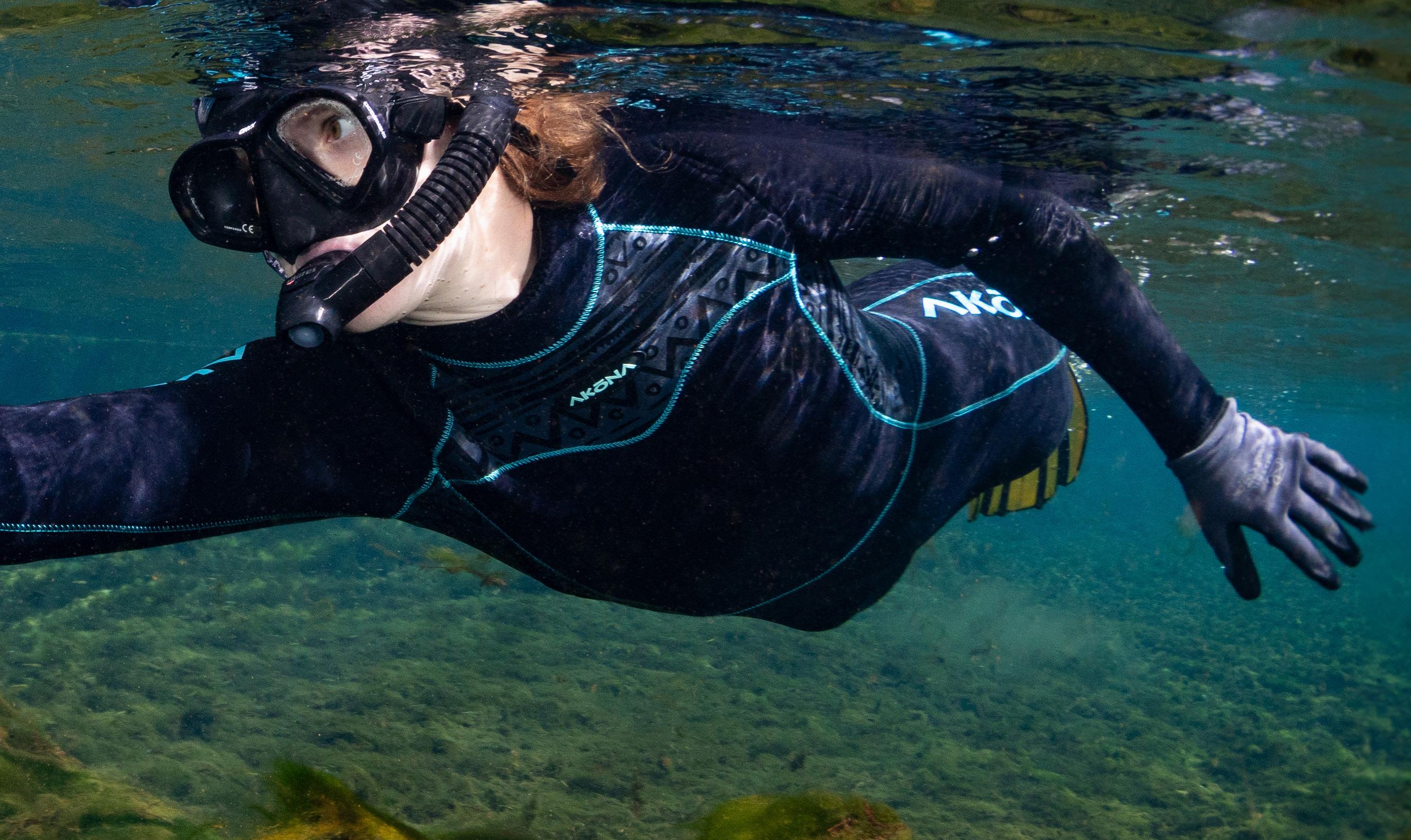
our team piles into a fifteen-passenger van and heads south to Florida to participate in the summer Fanatee population survey. We’re a more diverse group than usual, with visitors from Texas, California, and even Argentina joining the regular crew.
After taking medicine for motion sickness, the trip itself is a blur for me, but once we arrive, we go into hyperdrive quickly setting up camp, and preparing to jump into the water for the first sample of the weekend.
Though tired, we have a successful evening catching turtles, gathering data, marking them, and releasing them back into their homes. The experience of swimming to exhaustion followed by the methodical process of weighing and measuring turtles becomes like a meditation. I’m still not the fastest swimmer or the most skilled turtle catcher, but I love this work and the impact I know it’s making on the future of these animals.
The next day we make a grocery run, and as we return, we look for a tortoise burrow that someone had told us may be at the front of the park. Just past the gate, someone in the van says, “There it is,” and there, in the median in front of the guard shack, is a tortoise burrow and a proud Gopher Tortoise (Gopherus polyphemus) standing at attention in front of it. I am excited, naturally, because I’ve never seen one before.
But as I look around the van at my coworkers, and friends, people who have worked with and studied turtles for years, every single one is on their feet, hunched over seats, with their faces practically pressed against glass trying to get a glimpse of this majestic little guy.
And this moment is a testament to the unifying power of turtles, that even seasoned researchers, accustomed to working with turtles, can’t resist the thrill of seeing one in its natural habitat. This moment, these stories, and these animals connect us. They remind me of the importance of what we do, protecting turtles and ensuring their continued survival.
This NAFTRG survey site in Florida is just one of the multiple sites where Turtle Survival Alliance is working in North America and only a fraction of the impact the Alliance has on protecting turtles across the globe.
Acknowledgments: Fanning Springs State Park, Florida Department of Environmental Protection, Florida Parks Service, Manatee Springs State Park, and Joleen Barry.
Contact: Chelsea Rinn, Turtle Survival Alliance, Turtle Survival Alliance, 5900 Core Rd., Ste. 504, North Charleston, SC, USA 29406 [crinn@turtlesurvival.org]
New findings traverse state lines
by ELENA DURAN, JORDAN GRAY, AND HOLLY HEWITTHow did she manage to climb up there? Gazing upwards, Eric Munscher, Director of the Turtle Survival Alliance-North American Freshwater Turtle Research Group (TSA-NAFTRG), Dr. Gabriella Sosa of the Buffalo Bayou Partnership (BBP), and Kelly Norrid from Texas Parks & Wildlife Department could only wonder how a female Alligator Snapping Turtle (Macrochelys temminckii), an animal not designed for vertical climbs and heavy with eggs, had managed to make her way up a very steep bank to nest.
The turtle had been spotted by David Rivers, a long-time captain of the BBP’s custom vacuum boat, and although he knows these waterways like the back of his hand, he was shocked to see this turtle perched precariously on top of the enormous bank. After taking video he alerted Dr. Sousa and two days later he took the group back out to the site.
Eric is baffled at how the turtle accomplished climbing that bank to make a nest because the water levels were not high, and the angle from the water to where the nest was located is incredibly steep. This unlikely sight is also significant for Eric’s research: this is the first Alligator Snapping Turtle nest site he has documented in the urban Houston, Texas, area. Finding this nest in an urban situation is very significant from a conservation perspective—the area is seemingly suboptimal for nesting as it is highly tidal and brackish. This suggests the need for further study as this use of atypical habitat can help us understand where and


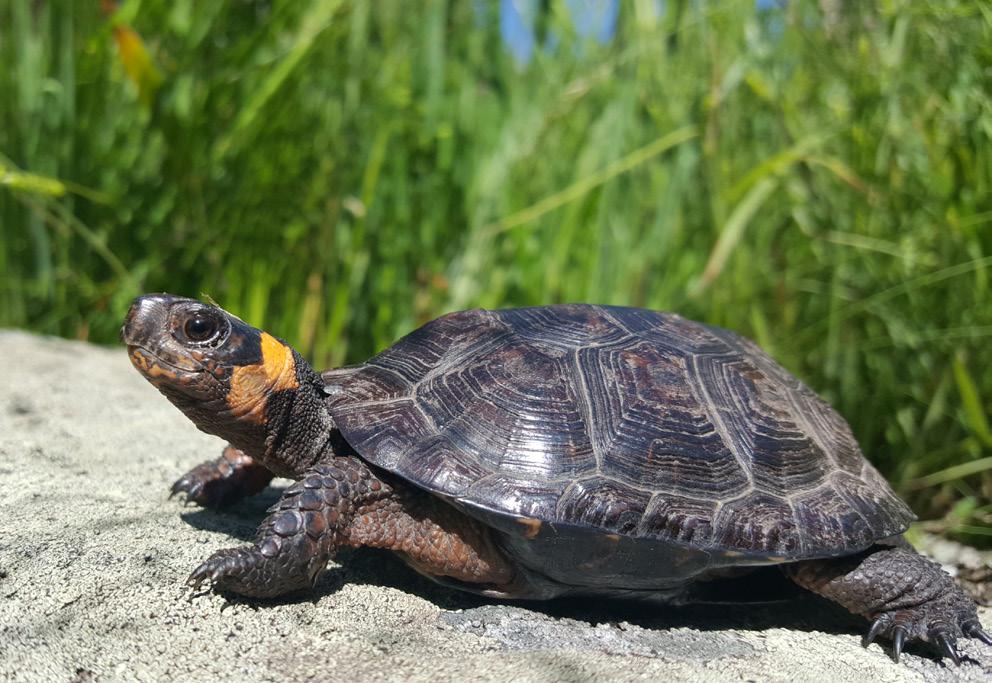
how females are using areas along highly impacted bayous to nest. To do this, the team will affix satellite transmitters to female Alligator Snapping Turtles in their study area, which will provide precise locations of their activities, including nesting spots.
It’s important to gain a better understanding of how the turtles are using this habitat because it’s in a volatile area that floods, and floods often, depending on the quantity of rainfall received. Despite these conditions, the turtles have adapted to these continuous changes in their environment and have been using Houston’s urban waterways
 Two of the 89 hatchling Carolina Diamondback Terrapins (Malaclemys terrapin centrata) recorded by Team Terrapin in 2023 make their way to the salty waters of a North Florida estuary.
Two of the 89 hatchling Carolina Diamondback Terrapins (Malaclemys terrapin centrata) recorded by Team Terrapin in 2023 make their way to the salty waters of a North Florida estuary.
to their benefit. The knowledge gained will help to inform further conservation measures and riparian zone use and planning—especially as they relate to municipal flood control initiatives—fallen trees, log jams, and root balls are all flood hazards, but removing them could also be very damaging to essential Alligator Snapping Turtle habitat.
This work is the longest running research on this species in the country and there’s yet more to do. This April, the team will begin trapping and tagging turtles in the San Bernard River, an area that extends 10-15 miles beyond the accepted, historic range of the species. This research shows promise as Eric learned that local fisherman have encountered three Alligator Snappers in this river before. Even more exciting, based on their descriptions, one of these turtles appeared to be a juvenile, which means there could be a breeding population of Alligator Snapping Turtles in the San Bernard that little is known about.
Alligator Snapping Turtles are resilient and adaptable, just like Eric and the team on their quest to study, research, and protect this vulnerable species. Next year will tell if more turtles have nested in other unlikely places and help to conserve those places amidst the metropolis that is the United States’ third largest city—an unlikely refuge for an abundance of Alligator Snapping Turtles.
Far to the east, on Florida’s northeastern Atlantic coast, a windy, choppy day isn’t enough to keep Tabitha (Tabby) Hootman and Team Terrapin from setting out to see if they can find female Carolina Diamondback Terrapins (Malaclemys terrapin centrata) in the process of nesting. They spot two females heading to nesting sites and decide to wait before attempting to gather all the information that they can about them. While waiting for them to complete their nesting, they spot another, then another, and another after that. Running towards them, Tabby and the team are able to capture and process six females, gathering vital information in this one golden encounter.
As the North Florida lead for TSA-NAFTRG, Tabby’s work focuses on Diamondback Terrapins, the only turtle in the world to live exclusively in brackish water. The field work entailing nest and female spotting, documentation, monitoring, and deterring predators has grown in leaps and bounds in the last year, drawing many new volunteers passionate about helping this threatened species thrive. When the program started, there were just six volunteers, but by the end of last year’s season, they had 47. The season for Diamondback Terrapin field work in Northeast Florida is from April 1 to September 30, and requires daily attention. More eyes in the field allow for greater opportunity for turtles to be counted and other crucial information to be gathered. Thanks to this boost in volunteerism, the number of nests counted has risen to well over 800 the past two years.
The progress realized is due in no small part to the

heightened level of community interest and the ability to amplify this important work. Spreading the word through local universities, zoos, and public interest groups has resulted in an upwelling of volunteers all wanting to do their part for turtles, even when time-consuming and grueling. Such was the case when 33 volunteers ranging in ages from ten to 80 came out and spent six hours under the blazing sun to remove a mountain of garbage from the island. And, on another occasion, one of the youngest volunteers found a group of hatchlings emerging from a nest, exclaiming, “I never want to leave; this is the best moment of my life!” There’s no age restriction on loving turtles.
The success of fieldwork comes down to the ability to find the animal you are studying in the wild—no easy task when meticulously combing the beach for small tracks leading to well-hidden nests. Thanks to the dedication of Team Terrapin, this season, 47 females were collected and equipped with PIT tags (Passive Integrated Transponders), small microchips the size of a grain of rice that allow for the identification of individual turtles. This method led to the discovery of a female that nested on the same part of the beach three times last year, lending important findings on female fidelity to nest site selection.
The tireless devotion of Tabby and Team Terrapin toward a vision where Diamondback Terrapins are thriving in Northeast Florida makes this research and conservation initiative for this unique turtle possible. This upcoming season promises more success, and more engagement with the turtle-loving community.
More than 800 miles north of Florida’s sandy beaches, wildlife biologists Gary* and Laura* slog through muck

that’s practically swallowing their field boots. Battling barbed, cutting, and poisonous plants, biting insects, and ticks, they’re on the lookout for a secretive resident of New Jersey’s wetlands: the Bog Turtle (Glyptemys muhlenbergii).
Despite its name, the Bog Turtle, the smallest turtle in the U.S., lives in various shallow-water habitats like fens, meadows, bogs, and swamps. These habitats are threatened and fragmented, just like the one in New Jersey that Gary and Laura are exploring.
Located on protected land, the Bog Turtle populations that Turtle Survival Alliance and the New Jersey Department of Environmental Protection are studying live between two wetlands separated by a young forest. The wetlands were once connected, but changes to the landscape and hydrology separated them, fragmenting their populations and threatening their existence. Sadly, this is common in the realm of the Bog Turtle. The team aims to learn about each of these micropopulations, and if rejoining them through habitat management can amplify their numbers.
In mid-September, as Gary and Laura navigate the dense wetland, they expect a routine day. With nesting season over and little turtle movement in the summer, their work has become somewhat monotonous. But, armed with knowledge of the turtles’ favorite individual locations, they head to a familiar spot where an adult male has taken up residence, wondering if they even need their tracking devices. Habit prevails, and Gary switches the device on.
The strong beep of the transmitter, picked up by their receiver, confirms the presence of the turtle—and another that they aren’t expecting. Nestled below the tussock is the well-grooved mahogany-colored shell of an unmarked
turtle. Gary picks up the new discovery and realizes that based on the number of growth rings, the turtle is just under seven years old—a subadult—and the first young turtle to be found during our study there.
Finding a new turtle is always exciting in fieldwork, but this discovery carries more significance for this Bog Turtle study. A young turtle’s presence indicates successful recruitment of new individuals into the population. With less than 20 turtles known at this wetland complex, every new turtle is a reason to celebrate. One small inconspicuous find brightens the future for this endangered species. With continued research efforts and future habitat management, perhaps in the coming years, Gary and Laura’s vigorous efforts under challenging conditions will be rewarded with the sightings of more young Bog Turtles.
The work of our United States projects and the volunteers that lead them paints a picture of dedication, perseverance, and hope in the face of environmental challenges and underscores the importance of grassroots conservation efforts, research, and habitat protection for many species of freshwater turtle in need of champions.
Acknowledgments: For their support and contributions to these projects, we would like to thank the Texas Parks & Wildlife Department, Kelly Norrid, Memorial Park Conservancy, SWCA Environmental Consultants, TC Energy Corporation, New Jersey Department of Environmental Protection–Fish and Wildlife–Endangered and Nongame Species Program, Brian Zarate, Florida Department of Environmental Protection, Florida Parks Service, Jacksonville Zoo and Gardens, Allison Conboy, Wade Smith, Ali Flisek, and Friends of Talbot Island State Parks, and Eric Munscher, Tabitha Hootman, and Joe Pignatelli for their contributions to this article.
Contact: Eric Munscher [emunscher@turtlesurvival. org]; Tabitha Hootman [thootman@turtlesurvival.org]; Joe Pignatelli [jpignatelli3@gmail.com], Turtle Survival Alliance, 5900 Core Rd., Ste. 504, North Charleston, SC, USA 29406
*Last name omitted by request.
“The Maryland Zoo is a founding member of the Association of Zoos & Aquariums’ Saving Animals
From Extinction (AZA SAFE): American Turtle Program whose goals are to conserve and expand wild populations of imperiled native turtles, including the North American Wood Turtle (Glyptemys insculpta), and develop a pathway for confiscated turtles to contribute to effective conservation efforts. We hope that Maryland Zoo’s Wood Turtle head start project will provide a model for returning confiscated turtles to the wild through their progeny in conservation breeding programs.”
- Dave Collins, Leader, Turtle Survival Alliance/ AZA SAFE: American Turtle ProgramEarly in 2020, just as the world was shutting down due to the emerging COVID-19 pandemic, Maryland Zoo’s Conservation Department was looking for opportunities to open itself up to new partnerships. The department was already involved with studies of native species, including the use of radio telemetry to track Eastern Box Turtles (Terrapene carolina) on our campus—
which is surrounded by old growth forests, wetlands, and natural streams—to understand more about their range and habitat usage. Having built up considerable knowledge and experience, we were excited to work with other species.
That’s when fate intervened in the form of the Maryland Department of Natural Resources (DNR). Maryland Zoo works with the Maryland DNR on multiple projects including on Black Bears, Snowy Owls, Bog Turtles, and other species. In this instance, Maryland DNR was in possession of female Wood Turtles rescued from an illegal collector in Upstate New York. Genetic testing pinpointed the turtles’ native region to a watershed in Western Maryland, so they came to our zoo for medical screenings while their future was considered. While healthy, it was determined the animals could not be released into the wild. They had spent too much time around other species and no one wanted to risk unintentionally introducing a turtle or herpetological disease into a declining wild population.
Instead, DNR was able to locate an appropriate male that was introduced to the confiscated females to begin a head start colony. It all came together quickly and, by the spring of 2021, we were underway. About that same time, we were incubating an egg and rearing a hatchling from a female Wood Turtle that was hit by a car within the same watershed. After rehabilitation, the mother was released back into the wild. We nurtured the hatchling with minimal human contact in a secluded area of our animal hospital. She was given a pool with an environment tailored to Wood Turtle development—with sediment, a strong water current, and foods like live worms to hunt.
After about a year, that hatchling was ready to survive these conditions in the wild. It was also large enough to hopefully thwart predation by raccoons and to carry a ra-

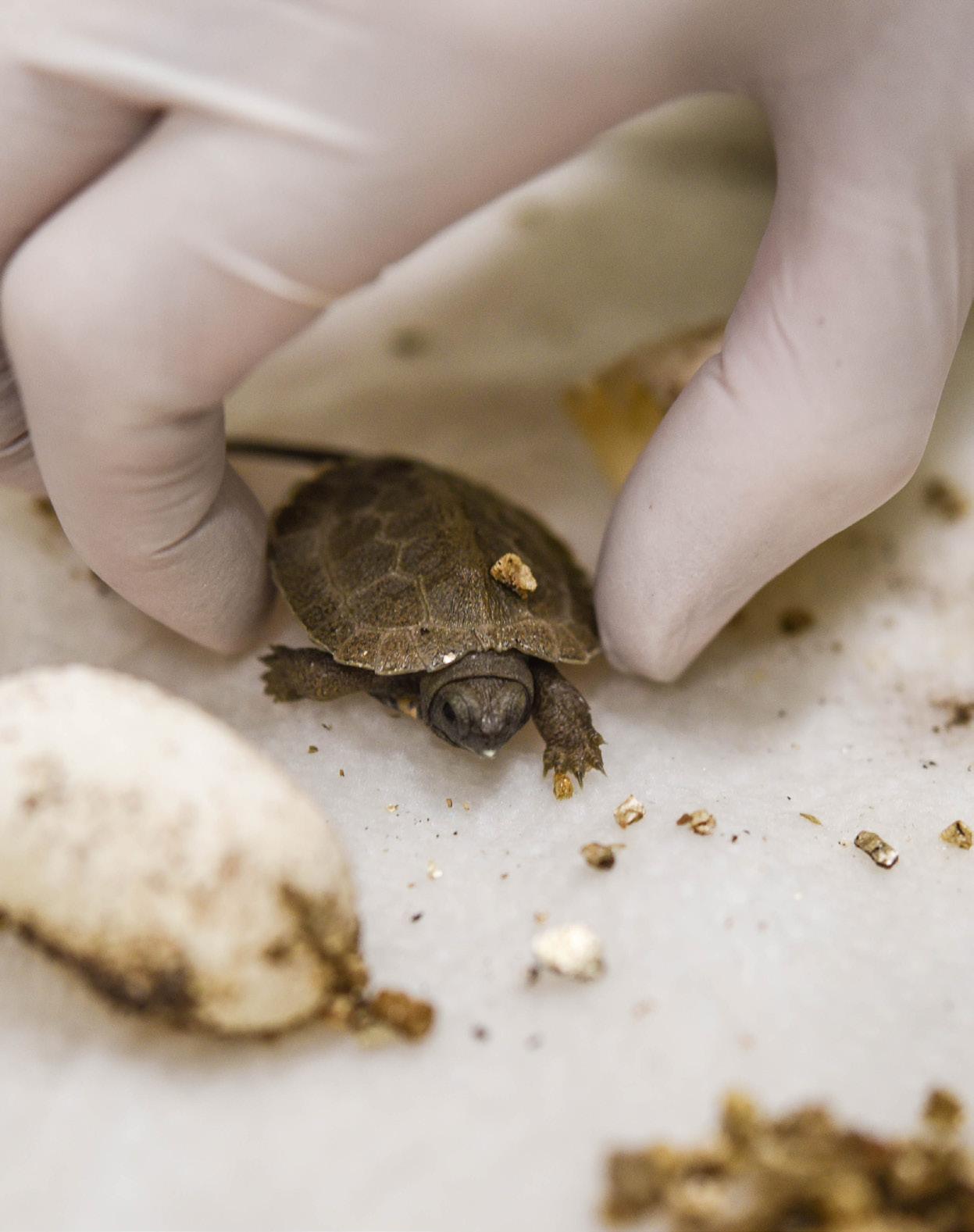
dio transmitter that DNR and our zoo successfully used to track the animal’s movement in its new environment. Our teams made regular visits to the release site for more than a year, monitoring the hatchling’s growth, weight, and overall health.
With this successful pilot study, we were confident in our headstarting and tracking protocols for this important species. And, just in time. By the fall of 2022 there were six head start hatchlings from the confiscated parents. The hatchlings were kept out of brumation to grow over the winter under the same conditions as the initial headstarted animal. In about a year, they would be ready for release.
Each turtle we can place in the wild is critical to the population. This small, charismatic species is vulnerable to the pet trade and habitat loss due to agriculture and human development. They are slow to reproduce, taking a long time to reach sexual maturity, and experience high hatchling mortality.
In addition to a forest with a cool, clear, fast-flowing stream, an ideal location for release would have a declining natural population. It also had to be remote enough that Zoo and DNR teams could regularly monitor and track the animals without drawing unwanted attention from poachers. Together, with the Susquehannock Wildlife Society, our zoo and DNR found a good release site in central Maryland.
From left: A Maryland DNR technician holds a wild Wood Turtle (Glyptemys insculpta) during a health survey with the Maryland Zoo; A Wood Turtle hatchling bred at the Maryland Zoo in Baltimore, the first cohort of the confiscated females; Maryland Zoo associate veterinarian Dr. John Flanders gives a health examination to a juvenile Wood Turtle prior to transmitter placement and release.

Once the hatchlings were large enough, about 100 grams in size, they were microchipped, outfitted with radio tracking devices, and successfully delivered to their new homes.
The collaboration between a DNR and our zoo provided a perfect opportunity for the original confiscated Wood Turtles to contribute reproductively, bolstering wild populations that have experienced striking declines. Key to the program’s long term success is treating each population holistically, not just focusing on the animals we release but addressing the collective threats they’re facing as a colony. There is no magic fix. It takes all of us, working together to help this amazing species reclaim its place in the Maryland wilderness.
Acknowledgments: The Maryland Zoo would like to thank Beth Schlimm and Brian Durkin from Maryland DNR and the Susquehannock Wildlife Society for their collaboration on this project, as well as Mike Evitts, Maryland Zoo Senior Director of Communications, for article assistance.
Contact: The Maryland Zoo in Baltimore, Conservation Department, 1 Safari Place, Baltimore, MD, USA 21217 [conservation@marylandzoo.org]

Empowering communities through tortoise conservation
by RICK HUDSONIn 1991, I made my first trip to Madagascar with the late John Behler and others, which became the trip of a lifetime. I was drawn to return to this enchanted island in 1994. During those trips, I was able to spend time with all four of the endemic tortoises, three of them in their habitat. Madagascar captured my heart and soul, and I developed an abiding love for the people and wildlife of this imperiled wildlife paradise. This passion continues today and will be with me for the rest of my life.
Four years later, I returned to the island nation for the 2008 IUCN Red-listing workshop, where the statuses of the Radiated, Spider, and Flat-tailed tortoises were elevated to Critically Endangered, joining the Ploughshare as being at a high risk of extinction. Two years following that important workshop, Turtle Survival Alliance launched a tortoise conservation program, and since 2010, I have returned to Madagascar one to two times per year to keep the program moving and respond to the growing threats.
Significant growth occurred for Turtle Survival Alliance’s Madagascar program in 2023, driven largely in response to intensifying poaching pressures and the need to establish community-protected areas for tortoise reintroduction. While we continue to focus on getting more of the ~23,000 Radiated Tortoises (Astrochelys radiata) prepared for release back into the wild, we have—out of necessity—expanded our enforcement activities to include more staff and improved our collaboration with the gendarmes (police). Likewise, the scope of our overall Confiscation to Reintroduction Strategy has expanded and includes the following elements, all interrelated and all critical to the long-term future of the Radiated Tortoise in the wild: 1) Rescue/rehab and Reintroduction; 2) Community Engagement; 3) Enforcement; and 4) Protected Area Management.
Though Madagascar has four species of endemic tortoises—all Critically Endangered and facing extinction, and all in need of Alliance attention—the vast majority of our resources are directed to the Radiated Tortoise because of the huge number that we are managing in captivity. While we have an ever-expanding role with Spider, Flat-tailed, and Ploughshare tortoises, this article focuses on the Radiated Tortoise. We intend to bring you updates on the other species in future issues.
Early in the history of the Madagascar program, it became evident that while we were dealing with the symptoms of the illegal tortoise trade—tortoise seizures—it was necessary that we also work on the enforcement side of the issue. We hired our first Enforcement Coordinator in 2013 and began building the capacity for enforcement at both the local and regional levels, working with both gendarmes and judicial officials.
While enforcement has been a cornerstone of this program for years—bringing many poachers to justice and disrupting trafficking networks—this program got a substantial boost from a U.S. Fish and Wildlife Service grant. A twoyear project entitled Reversing the decline of Madagascar’s critically endangered Radiated Tortoise: a paradigm shift in reducing tortoise trafficking was supported with $75,000 from that grant and got underway in late 2022. The paradigm shift refers to an improved working relationship between the Alliance’s network of local informants who are committed to combating tortoise poaching and the local gendarmes who are officially in charge of enforcement actions. This shift resulted from an unfortunate incident that exposed corruption on the enforcement side while bringing to light the value of well-intentioned local informants in combating both corruption and poaching. The incident helped both parties realize the benefit of sharing intelligence and cooperating openly, overcoming distrust and bridging an important gap in the enforcement chain.



Seizing on this opportunity, our proposal implements the following objectives: 1) Improve communication and establish trust among stakeholders by utilizing District Tortoise Coordinators (DTC) to coordinate tortoise anti-poaching activities; 2) Expand the network of qualified informants by providing essential communication and transportation equipment and by supporting the prosecution of identified suspects; and 3) Improve prosecution rates by following arrest cases at the judiciary level and facilitating the presentation of evidence and witnesses. The goal of this approach is to foster collaboration between primary stakeholders in two districts, Beloha and Tsihombe, in the Androy region. Two DTCs have been hired and are helping ensure that a bridge between communities and law enforcement officials is established and anti-poaching activities are coordinated. This strategy is helping to curtail tortoise poaching by more effectively detecting and apprehending traffickers.
The underlying weaknesses—other than corruption—in the enforcement process in southern Madagascar is that gendarmes are based in the few towns that dot this rural landscape, are poorly funded, and have no capacity for
patrolling. Poaching camps can operate with little fear of being caught unless there is an active network of informants that are willing to confront or report them. Our informants are provisioned with motorbikes, bicycles, and cell phones so they can notify gendarmes of illegal activity. Even then, the Alliance is responsible for providing transportation to the gendarmes and facilitating their work.
In 2023, the first full year of this project, the two DTCs began to actively recruit trusted villagers to work as informants. DTCs convene quarterly meetings to coordinate communications among informants and enforcement officials and an effective anti-poaching system is now taking shape and getting results. In the first five months of 2023, 281 tortoises were seized and the poachers caught and jailed. One thing is becoming clear based on the number of informants volunteering to assist the anti-poaching campaign: tortoise poachers have few friends, and there is a willingness to report their activities.
Sometimes just providing the opportunity is all it takes to inspire people to do the right thing. Such is the case with a young man named Salakasoa, a name that now stands out
in the Beloha district. He became a Village Volunteer in March 2023, having been trained with the necessary skills to identify and combat tortoise trafficking. This indicates a profound shift in the community’s perception of authority and justice, which has often been reticent or fearful of public administrations, especially the gendarmes and the courts.
In his short time “on the job,” Salakasoa has been involved in several joint operations, disrupting poachers and recovering tortoises. His tally is impressive, with over 305 tortoises saved and eight traffickers arrested through October 2023. Further, his testimony was crucial to the conviction of four poachers, who were given prison sentences and fines. Salakasoa’s commitment demonstrates the effectiveness of individual action, strengthened by training and institutional support, in the fight against trafficking of endangered species. His story is a testament to the power of community mobilization.
Our Confiscation to Reintroduction Strategy began to be realized in 2021 when 1,000 Radiated Tortoises were moved to a community-protected forest at Malaintsatroke in the Androy region and placed in a large soft-release enclosure for eight months. This was the first full-scale reintroduction of this species in Madagascar and represented a milestone in our effort to begin moving some of the 25,000 tortoises in our care back onto the landscape. This group was fully liberated in 2022 and a subset of 50 was intensively monitored via radio telemetry and GPS data loggers.
Two exceptional wildlife biologists, Lance Paden and Brett Bartek, took charge of the reintroduction process and designed a program that would not only generate finescale movement and home range data, but would also train and empower local Alliance staff and community members to track and monitor tortoises post-release. Building this level of capacity in-country is important to the future of this program and we are finding our Malagasy counterparts to be motivated and quickly become skilled at tracking tortoises in the field.
The reintroduction program took a major stride in 2023, which saw another 2,000 Radiated Tortoises return to the wild. In February, 1,000 tortoises were moved from the Tortoise Conservation Center (TCC) to the community of Ambatosoratse and placed in a 20-acre (8-hectare) soft-release enclosure for acclimation. In July, Brett Bartek attached VHF transmitters and GPS loggers to 20 tortoises for monitoring, and in October, the fences were removed and the tortoises were allowed to self-liberate into the surrounding habitat. At Malaintsatroke, a second group of 1,000 tortoises was received from the TCC and evenly divided amongst two soft-release enclosures. This strategy was designed to test


the impact of a three-versus-six-month penning period on site fidelity, or their tendency to remain in the vicinity of the pre-release enclosure. Data from the first 1,000 tortoises released in 2021 demonstrates that a six- to eight-month penning period is sufficient to encourage strong site fidelity; can that period be reduced by 50%? Additionally, and just as importantly, is the very low mortality rate observed in the 80 tortoises that have been tracked over the past two years.
Also in 2023, the Alliance partnered with the Berenty Nature Reserve, one of the most popular and best-protected lemur tourism destinations in southern Madagascar. With a grant from the Andrew Sabin Family Foundation, Berenty constructed a secure 22-acre (9-hectare) enclosure designed to hold juvenile Radiated Tortoises. This encompasses both good spiny forest habitat and an adjacent parcel of open land that is being reforested; this offers an amazing opportunity to study habitat use and seasonal movements in tortoises. By April 2024, we expect to move 2,000 juveniles to Berenty from the TCC to continue their growth in a natural forested environment, independent of human care.
The fieldwork done in 2022 and 2023 has laid a firm foundation on which we can build as we try to get more tortoises out of managed care and returned to the landscape. We now know how to reintroduce tortoises successfully; however, the most important—but often time consuming— aspect of this is community engagement. Building strong relationships with communities that inhabit good tortoise habitat and that are willing and enthusiastic about establishing protected forests is the critical piece of this equation.
The native communities across southern Madagascar largely inhabit a vast rural landscape, and with few towns or cities, there is little capacity for law enforcement. This leaves tortoise poachers the ability to set up camps to collect tortoises undeterred unless communities either confront or report them. This is at the heart of the Alliance’s enforcement strategy: build a broad-based coalition of community volunteers and informants to serve as the eyes and ears of the gendarmes. It has often been said that the battle to save species will be won or lost at the community level, and this is especially true for the Radiated Tortoise.
The process of identifying sites to reintroduce tortoises employs a strict set of nine evaluation criteria, including the availability of suitable habitat, the history of poaching in the area, the presence or absence of resident tortoises, and most importantly, the attitudes of the local communities. Are they willing to manage their forests for tortoises (not clearing them for agriculture) and establish their forests as community protected areas? Establishing such protected forests involves a legal process that the Alliance helps facilitate. Ascertaining community attitudes requires time and

From left: Reintroduction community member, Panah, as he is nicknamed, assists with radio-tracking and monitoring of reintroduced tortoises; Confiscated Radiated Tortoises (Astrochelys radiata) in their habitat at the Lavavolo Tortoise Center in southern Madagascar. In October 2023, partnering veterinary teams performed health evaluations on 160 tortoises and performed physical exams and placed microchips in 3,100 radiated tortoises slated for release in the next year.
engagement from Alliance outreach staff but is absolutely critical if reintroduced tortoises are to remain safe and protected over time. This is not an exercise where you return tortoises to the community and then walk away. Regular return visits are necessary to meet with village elders to learn their needs and determine what incentives they require.
Based on these meetings, the Alliance has, to date, built three schools as requested by the community. With drought conditions worsening in southern Madagascar, water availability is often in critical supply, so storage cisterns are often requested. These can be adjacent to schools or other buildings, collecting rain runoff from the roof and channeling it to underground cisterns. We also provide financial support through stipends to community members that have been trained to track tortoises and patrol their forests for incursions. We are finding many community members who are enthusiastic and adept at radio-tracking and who embrace the challenge of finding a “lost” tortoise who has wandered off or whose monitoring equipment has failed.
To improve the efficiency and accountability of the village forest patrols, we will soon train them on SMART (Spatial Monitoring And Reporting Tool) patrolling methods. We are also looking for ways to improve overall community life through alternative livelihood options, or access to education, outreach or training materials.
In 2024, our goals at Malaintsatroke, our longest site of engagement and first tortoise release site, are to provide training on beekeeping and honey production, an effective way to maintain intact forests while improving the production of a natural resource. We are also looking to partner with organizations that specialize in innovations to increase water availability or ones that offer training in alternative agricultural methods that encourage a shift to drought-resistant crops. The Alliance has received three grants this year that have included community engagement activities, which are becoming increasingly important priorities among donor agencies. Our goal is to forge long-term relationships with the communities where we have established new tortoise populations, and then monitor both the tortoises and the villages there over time. The future of the Radiated Tortoise depends on having well-managed pro-
tected areas, both at the community level and within Madagascar’s official protected areas system.
Thank you to Aktionsgemeinschaft Artenschutz (AGA) e.V., Association of Zoos & Aquariums: Saving Animals From Extinction (AZA SAFE), Chuck and Ernestina Kreutzkamp Foundation, Cincinnati Zoo, Columbus Zoo, Dennler Family Fund, Fort Wayne Children’s Zoo, Gregory Family Charitable Fund, Milwaukee County Zoo, Riverbanks Zoo & Garden, St. Louis Zoo, United States Agency for International Development (USAID), United States Fish and Wildlife Service (USFWS), Zoo Atlanta, Zoo Knoxville, Zoofari Parks, LLC, and Brett Bartek, William and Kathleen Holmstrom, Lance Paden, Jamie Palmer, Bonnie L Raphael, Roy Young, and our many Alliance staff in Madagascar who work tirelessly to ensure that these tortoises have a future in the wild.
*Financial support of $5,000 or more, and in-kind support, from October 1, 2022 to September 30, 2023
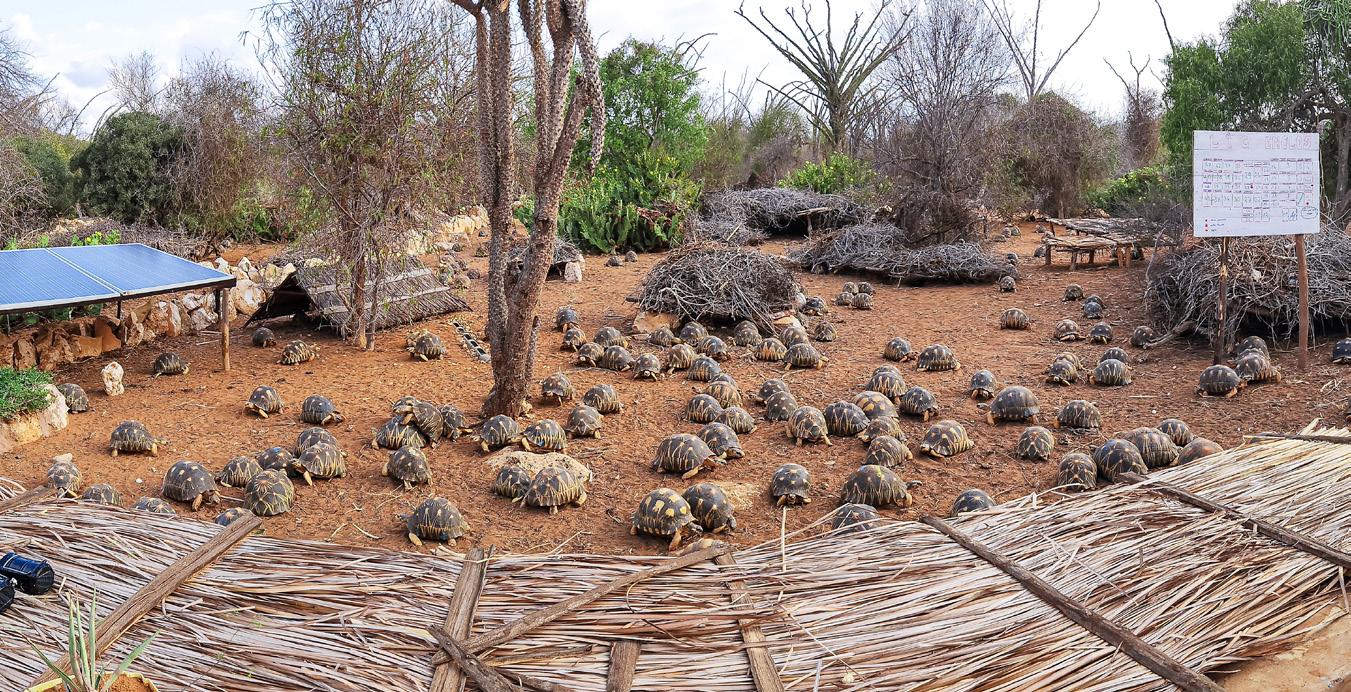
In October 2023, a multi-institutional team of zoo veterinarians, technicians, and tortoise husbandry experts traveled to the Lavavolo Tortoise Center (LTC) in southwest Madagascar to perform pre-release health evaluations on Radiated Tortoises. We managed to also implant microchips in 3,200 of the 5,000
tortoises slated for reintroduction over the next few years. This work is part of an ongoing program to monitor the health of previously confiscated tortoises that are under the care of the Alliance and to protect the health of wild tortoises during and after the rewilding process. Prior to this trip, we performed the same at the Tortoise Conservation Center (TCC) in 2020 and 2022.
In addition to working with the tortoises, we provided hands-on field health training to Malagasy veterinary students and conducted a short course at the Veterinary School in Antananarivo. Further, molecular scientists from the Saint
Louis Zoo have been sharing techniques and training molecular technicians at the Mahaliana Diagnostic Wildlife Laboratory in Antananarivo. Though highly qualified, the Alliance’s full-time veterinarians find themselves challenged to keep up with the routine veterinary care of the 23,000 tortoises that are spread amongst three facilities in Antananarivo and extreme southern Madagascar. So, since 2020 our team has concentrated on providing supplies and services to facilitate return of tortoises to the wild.
In the process of screening 6,000 tortoises to date, we have been able to refine the standard methodologies used and field-test and validate some novel testing modalities. In the spring of 2023, we also investigated the status of infectious diseases in free-living Radiated Tortoises through PCR screening in-country and serology and cultures in the U.S. This work is a partnership among Turtle Survival Alliance, Saint Louis Zoo, Zoo Knoxville, Wildlife Conservation Society, AZA SAFE Radiated Tortoise program, The Smithsonian’s National Zoo, Zoo Atlanta, and the University of Florida.

An interview with Will Ahrens and Dan Pearson
Through their extraordinary contributions to tortoise husbandry, Will Ahrens and Dan Pearson have made long-standing commitments to establishing much-needed sustaining captive populations of both species of Madagascan dwarf tortoises, the Spider and Flat-tailed. As life-long tortoise enthusiasts, both Will and Dan realized that if they were going to focus on endangered tortoises in captivity, it had to be for a higher purpose: conservation.
What motivates you to do what you do for tortoise conservation, especially Madagascan tortoises?
Dan: I was able to get small groups of Spider (Pyxis arachnoides) and Flat-tailed (Pyxis planicauda) tortoises in 2002 shortly after the importation of these species ended. I at-
tended a Turtle Survival Alliance/IUCN SSC Tortoise & Freshwater Turtle Specialist Group symposium where I met John Behler and Michael Ogle, who helped direct me toward that higher purpose. Although I feel guilty keeping animals in captivity, with species like the dwarf tortoises and the Radiated Tortoise (Astrochelys radiata), extirpation in their native range could be on the horizon, so assurance colonies are necessary. However, support of in situ conservation—both moral and financial—must be a priority, and the Alliance’s support of both in situ and ex situ programs has always attracted me. Without saving a wild place in nature for them, we are simply collecting artworks that can replicate themselves.
Describe some of your significant contributions to the captive husbandry of Madagascan tortoises.
Will: When Pyxis were first imported from Madagascar around the year 2000, I acquired founder groups of the three subspecies of Spider Tortoises as well as Flat-tailed Tortoises. Several unique aspects of their husbandry were unlike any other tortoise I had kept previously, specifically their need for a brumation over the winter as well as the need for an embryonic diapause period during egg incubation. While challenging in the beginning, once these aspects were understood, the tortoises thrived and were extremely prolific in my collection.
Dan: Figuring out the enigma of Pyxis aestivation cycles and embryonic diapause was fairly straightforward. The
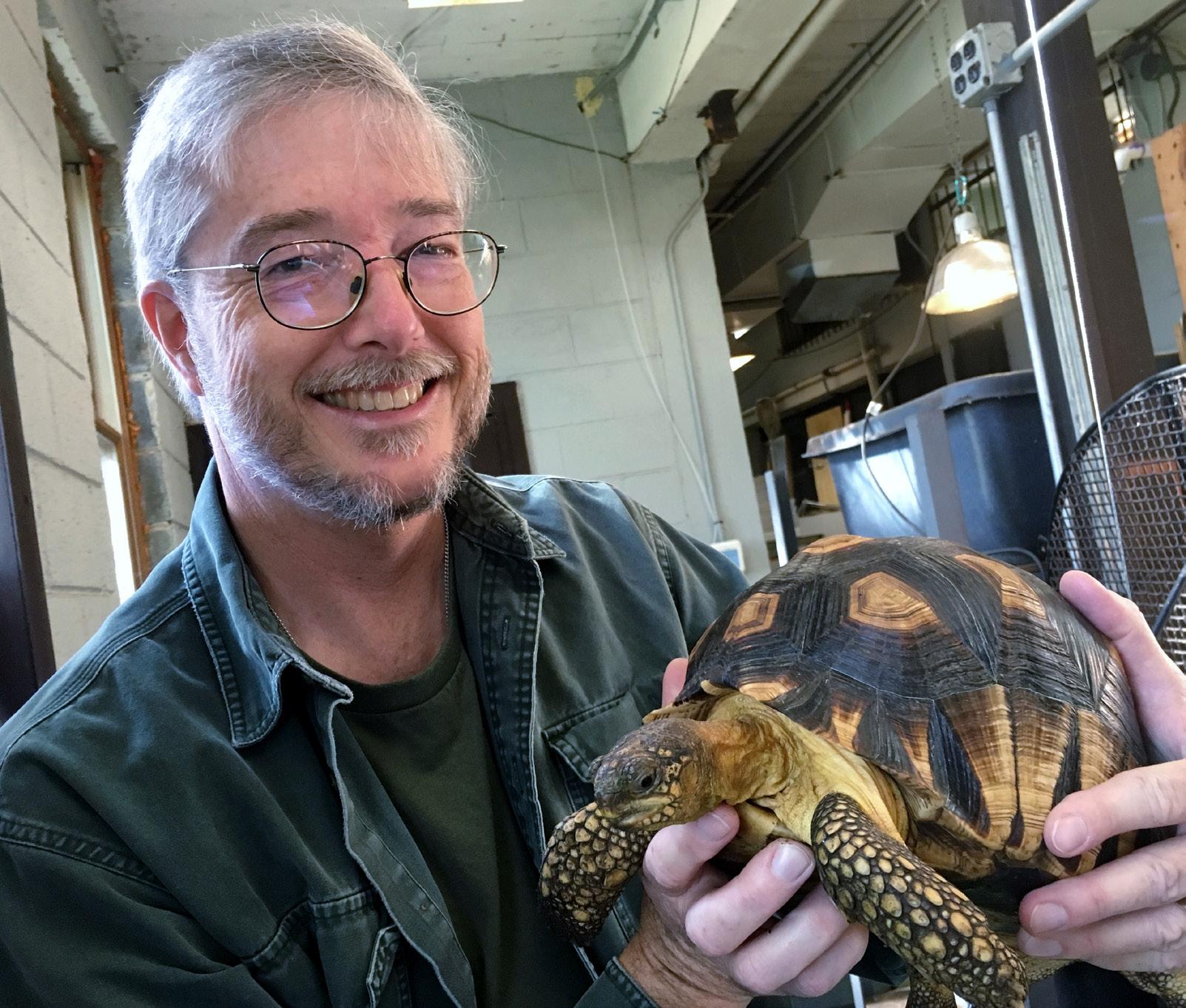
European Spider Tortoise studbook had detailed husbandry notes, and I was able to hatch eggs my first year. I had success with Flat-tailed Tortoises, and in 2016, was able to hatch my first captive-bred second-generation offspring from a female hatched 12 years previously. I compiled online weather data from Madagascar and worked with information from Durrell Wildlife Conservation Trust on soil temperatures to refine incubation protocols. These data and my own experiences were presented at the 8th Annual Symposium on the Conservation and Biology of Tortoises and Freshwater Turtles during a special session on Madagascar and later published in Chelonian Research Monographs #6, Turtles on the Brink in Madagascar.
Discuss the importance of long-term commitment such as yours to the sustainability of Pyxis in captivity. Will: While Pyxis seemed very well established in captivity in the United States, in the late 2000s we saw massive die-offs of the original wild-caught animals in collections, likely due to intranuclear coccidiosis, which continues to threaten captive collections today. This issue highlighted the fact that the few private breeders who still held Pyxis needed to coordinate with each other to ensure they survived in U.S. collections; to that end we organized the Pyxis Cooperative
Dan: Managing ex situ colonies of critically endangered tortoises is a slow and steady process. I have been frustrated with the ephemeral nature of many collections as inter-
est waxes and wanes. Adult Pyxis are particularly sensitive to relocations, and many have perished in the last two decades as they have been moved between collections. Multiple transfers not only pose a risk but also tend to muddle the bloodlines if detailed records and IDs are not kept. With so few Pyxis in captivity, knowing the animal’s origin is critical to avoid inbreeding and loss of genetic diversity. To mitigate these problems, I have been working with a few other dedicated Pyxis keepers in the Pyxis Cooperative to pair up unrelated animals and to try and minimize the financial motivations that often compromise their best interests, as well as participate in the Association of Zoos & Aquariums (AZA) Pyxis studbooks.
Can you tell us about the importance of AZA studbooks in Pyxis sustainability?
The AZA studbook, managed by Michael Ogle, Curator of Herpetology at Zoo Knoxville, is vital in keeping track of what animals are still present both in zoos as well as private institutions here in the U.S. As many are aware, there are significant threats to the future of Madagascar’s tortoises due to habitat loss and collection for bushmeat and the pet trade. While significant work is being done in their home ranges, and that will hopefully be successful in the long run, it is very important that we continue to develop and maintain captive assurance colonies, both in the U.S. and abroad. Cooperation between zoos and private keepers in this regard is vital.
In the vast, rugged landscapes of Northern Kenya, where wildlife roams free under the expansive African sky, a lesser-known creature has been quietly thriving in the shadows of rock crevices—the Pancake Tortoise (Malacochersus tornieri). For over a decade, my journey in wildlife conservation, particularly within the community conservancies of this region, has been filled with remarkable discoveries. However, it wasn’t until 2021, during my tenure at Lewa Wildlife Conservancy, that I would first encounter this enigmatic species that would captivate my interest and expand the scope of my conservation efforts.
This elusive reptile, known for its flexible flat shell and shy nature, was hardly recognized outside the circles of specialized researchers and wildlife rangers. My introduction to this species came about through discussions with Canadian researcher Marc Dupuis-Desormeaux, then at York University, and working in collaboration with Turtle Survival Alliance, who had embarked on a mission to survey these tortoises across Northern Kenya. Motivated by a deep-seated passion for community conservancies, I spearheaded a team of research assistants to not only study the Pancake Tortoise within Lewa but also to extend our efforts to neighboring community conservancies, Leparua and Il’Ngwesi.
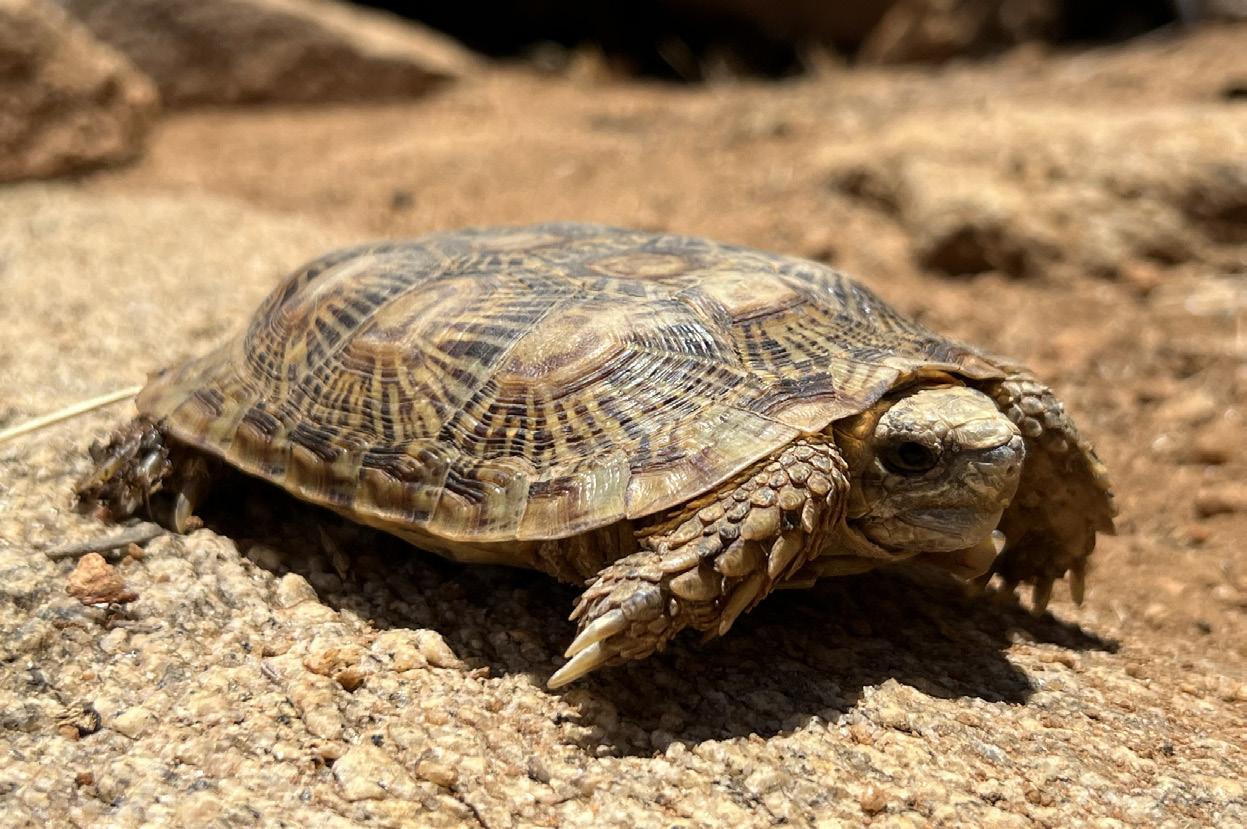

Our fieldwork was challenging as it is all on foot. We climb up and down rocky hills while trying to avoid angry elephants, rhinos, buffaloes, or hyenas who don’t enjoy seeing us out of our vehicles. Venturing into the bushy, rocky, and sometimes dangerous terrains of these conservancies, we embarked on daily missions to locate and document the Pancake Tortoise. Crawling on our bellies to inspect rock crevices, differentiating the tortoises’ fecal droppings from those of other inhabitants like lizards, mongooses, and squirrels, and cautiously avoiding the occasional spitting cobra, our team employed an array of tools and techniques to safely retrieve and examine these creatures. Each tortoise found was meticulously documented—photographed, weighed, measured, microchipped (PIT tags) and even swabbed for DNA sequencing ensuring individual tracking and contributing to a growing database of knowledge on this species.
The journey was not without its challenges. The initial lack of awareness and prevalent negative cultural beliefs surrounding the Pancake Tortoise among community members and conservancy rangers posed significant hurdles. Although many tribes view tortoises as signs of long-life, in some cultures within these regions, the tortoise is associated with adverse omens, leading to its unwarranted persecution. Confronted with these attitudes, I recognized the need to broaden our conservation efforts, focusing on education and awareness to alter perceptions and foster appre-
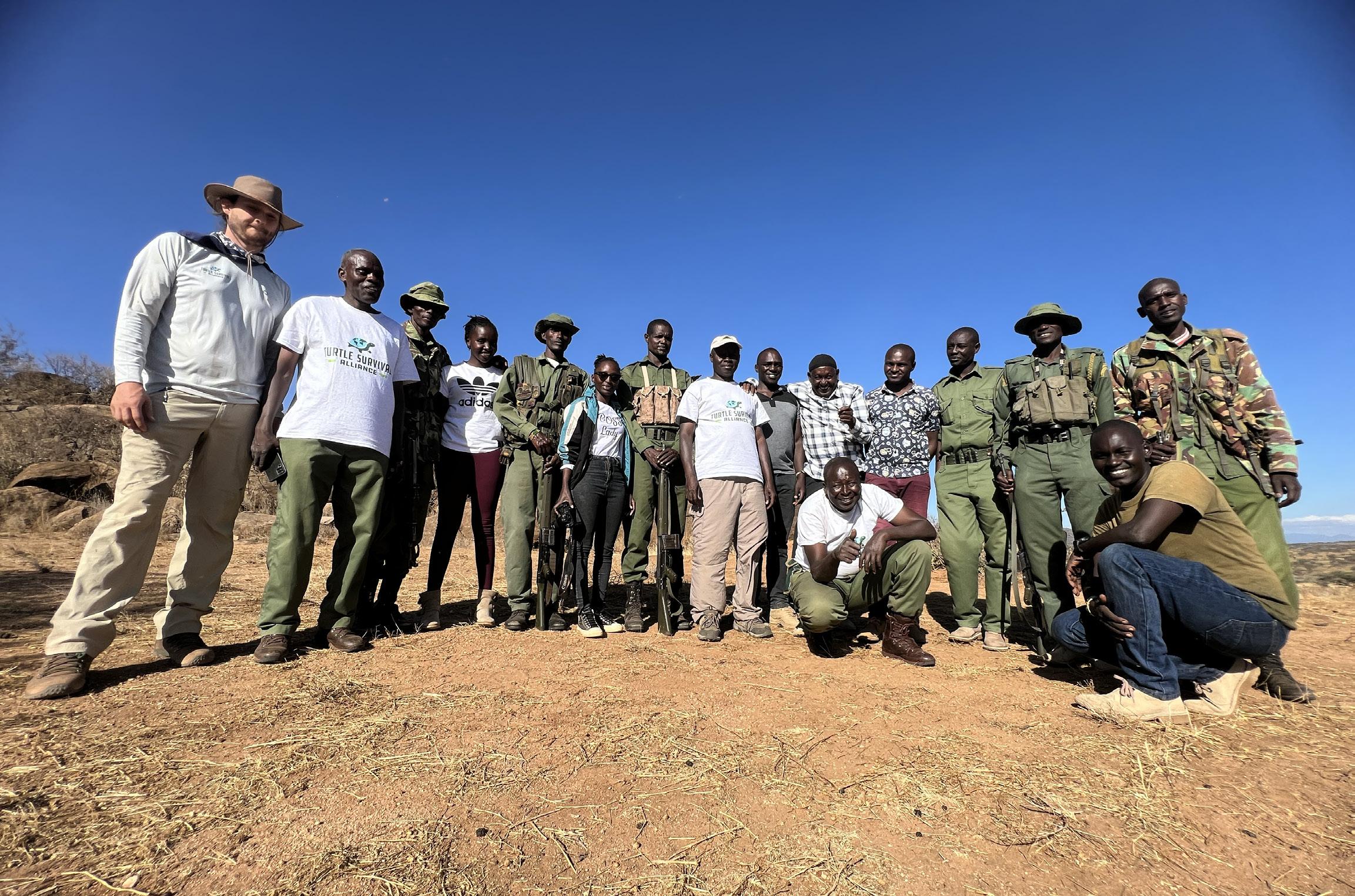
agencies, culminating in the start of the development of a National Species Recovery Strategy for the Pancake Tortoise in Kenya. This strategy promises to be a significant milestone in the conservation of this species, ensuring its protection and survival for generations to come.
ciation for this unique species.
The subsequent surveys conducted in 2023 in Leparua and Nasuulu Community Conservancies unveiled a startling reality: a near-total ignorance of the Pancake Tortoise’s existence and its ecological significance. This revelation spurred me to engage further with Turtle Survival Alliance and other partners, securing support to expand our survey efforts to more conservancies across Northern Kenya.
By the end of 2023, our initiative had grown to encompass seven community conservancies, educating them on the Pancake Tortoise’s status, threats, and the potential for ecotourism opportunities. Our achievements have not only contributed to the identification and documentation of 287 individuals but also laid the groundwork for the conservancies to recognize and leverage the tortoise as a unique attraction, potentially transforming local economies through ecotourism.
Looking ahead to 2024, our efforts have garnered recognition from the Kenya Wildlife Service and other national
As we continue to unveil the hidden jewels of Northern Kenya, the journey to save the Pancake Tortoise is a testament to the power of community-based conservation and the endless possibilities that arise when we come together to protect our planet’s most vulnerable species.
Acknowledgements:
I extend my heartfelt gratitude to Turtle Survival Alliance, Cheyenne Mountain Zoo, The Mohamed bin Zayed Species Conservation Fund,the United States Fish and Wildlife Service, York University, and Glendon College for their unwavering support and financial contributions to our work. Additionally, I thank my colleagues from the Kenya Wildlife Service and the National Museums of Kenya for their collaboration and dedication to conserving Kenya’s natural heritage.
Contact: Dominic Maringa, Lewa Wildlife Conservancy, Private Bag, Isiolo, Kenya, 60200 [dominic.maringa@ lewa.org]
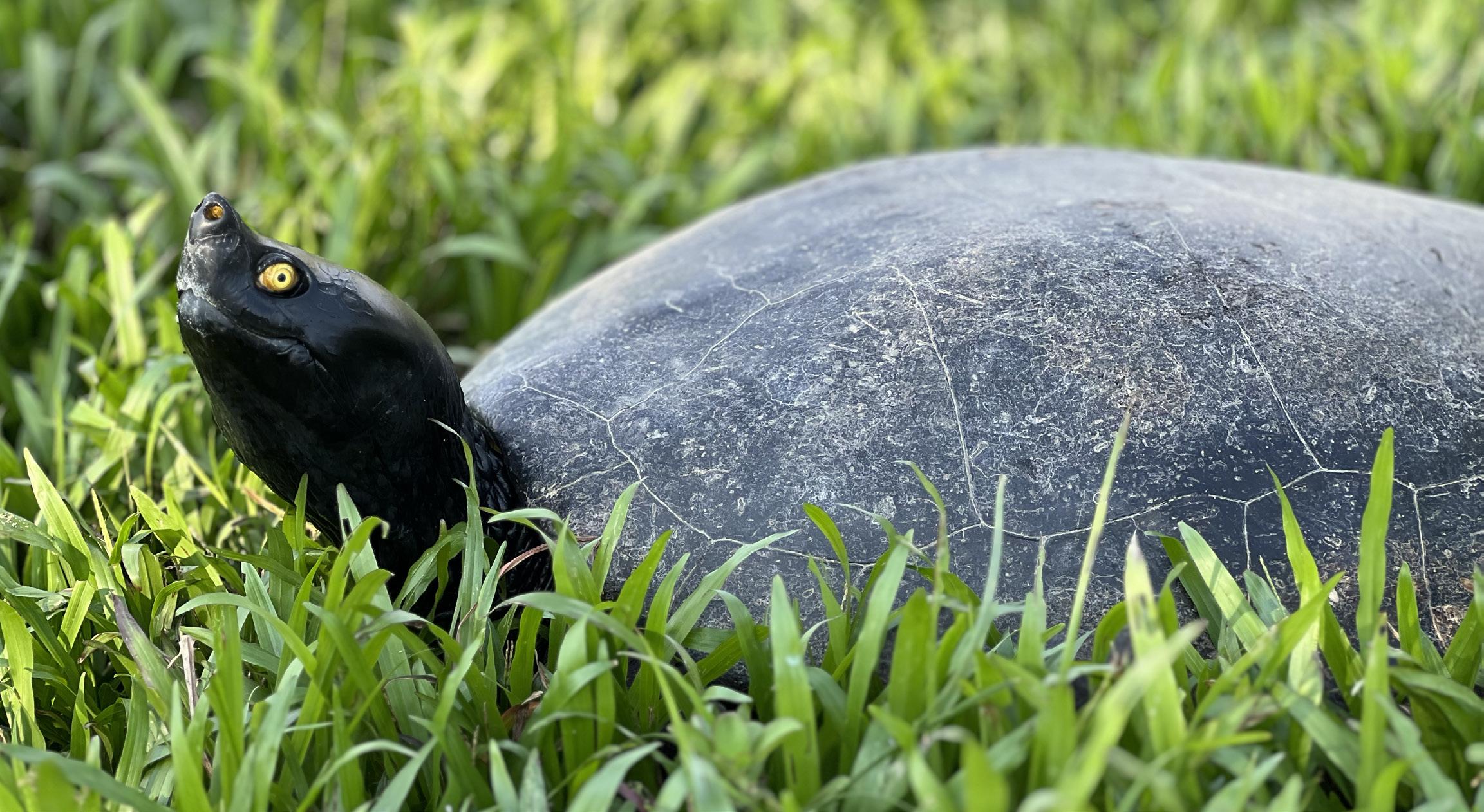
Former poachers turned turtle protectors
by PELF-NYOK CHENThirteen years ago, I arrived in Kemaman, Terengganu, in search of the critically endangered Southern River Terrapin (Batagur affinis). My project to survey and determine the presence of Southern River Terrapins took me to 35 rural communities in the state of Terengganu. One of the villages that I visited was called Pasir Gajah. I had earlier communicated with the chief of the village, and he had helped me gather a few men who regularly spent time in the river. Recall that this was before the cell phone application WhatsApp was widely used, and there was no location sharing function on my phone.
After exchanging names and greetings, I asked the local villagers whether they knew anything about the Southern River Terrapins. They proudly admitted to collecting and consuming terrapin eggs. And, when I asked whether they had seen a decline in the number of females and the eggs produced, they were surprised I knew about it. They told me how abundant the eggs were a few decades ago and how scarce they had now become. I proposed a project to protect and conserve the terrapins and asked whether they would like to work with Turtle Conservation Society of Malaysia (TCS), a non-profit organization that I had just co-founded. I was surprised when they nodded their heads
enthusiastically and said, “Yes!”
Soon after, we managed to gather a few local folks who were also poachers at that time, and who later called themselves the “Terrapin Guardians.” During the nesting season, the Terrapin Guardians would camp along the riverbank to wait for female terrapins to emerge and nest.
When the female completes nesting, a Terrapin Guardian would carry her to the campsite for me to weigh, measure, and microchip. In the first few years, we also weighed and measured all the terrapin eggs, so as you can imagine, there was barely any time left for sleep!
The next morning, we’d bring these eggs back to the village for incubation. We couldn’t leave the eggs on the riverbank due to a lack of security, so we concluded that it was safer and more economical to incubate them in a secure simulated hatchery. After about three months, the hatchlings would emerge. I would record the hatching success of the eggs, measure and weigh all the hatchlings, and break open unhatched eggs to find out why they didn’t make it. Then, a Terrapin Guardian would raise them in the hatchery in the village for a few months before their release.
When I stepped into the village for the first time, I was acutely aware that I was an outsider. I was of a different race, a different religion, and of a gender not often seen in a place of authority in Malaysian culture. I was concerned about how I and the project would be received by the local villagers.
So, I was immensely humbled by how the local folks accepted me like family. It’s true that what got me into the village was the terrapins, but through listening and engaging
breeding coloration. This individual was encountered by our Terrapin Guardians during one of our regular river surveys in the Kemaman River, Terengganu; A Terrapin Guardian retrieving terrapin eggs after the female has completed oviposition. All eggs are then taken to the hatchery for incubation. The leftmost egg cracked as it dropped onto a tree branch in the nest chamber; An adult female Southern River Terrapin sand-bathing in its nest chamber before returning to the river. Female terrapins are allowed to nest undisturbed. Only when they show signs of returning to the river will their eggs be retrieved and brought to the hatchery.
with the local communities, it opened up a host of opportunities for empowering the people as well.
I started working with five Terrapin Guardians to protect one river bank in 2012, and now we have 15 Terrapin Guardians protecting four river banks. In the 2023 nesting season, our Terrapin Guardians collected a total of 1,037 terrapin eggs for incubation, compared to 668 eggs collected in 2022. To date, our community-based conservation project has saved more than 8,200 terrapin eggs from human consumption, and released more than 4,600 headstarted terrapins into the Kemaman River. Without this conservation project, none of this would have happened.
Throughout the year, the team has also removed approximately 750 lbs (340 kg) of damaged and discarded fishing gear from the river to prevent terrapin entanglement. They have also removed illegal fishing lines and hooks that not only endanger terrapins but also birds.
In September 2023, five Terrapin Guardians were in-

volved in a ten-day terrapin population survey in the states of Perak and Kedah. The team caught one juvenile Southern River Terrapin and two juvenile Painted Terrapins (Batagur borneoensis) in the Kedah River.
There is so much more that needs to be done. We need to conduct more research projects. We need to intensify our conservation efforts. The Southern River Terrapin takes about 20 years to attain sexual maturity, so if all their eggs are consumed in one generation, that entire generation would be lost, greatly setting back recovery efforts. But most importantly, the critically endangered terrapins of Peninsular Malaysia need continuing support and involvement from the global community—we cannot do this alone.
Acknowledgments: This work would not be possible without the generous support from many partners and donors: Asian Species Action Partnership, King Baudouin Foundation, Malaysian Department of Wildlife and National Parks, Malaysian Wildlife Conservation Foundation, Malaysia Rail Link Sdn. Bhd., National Conservation Trust Fund for Natural Resources, the GEF Small Grants Programme, the Mohamed Bin Zayed Species Conservation Fund, Turtle Conservation Fund, Turtle Survival Alliance, United States Fish and Wildlife Service, and WWF-Malaysia.
Contact: Pelf-Nyok Chen, Turtle Conservation Society of Malaysia, 13538, Lorong Solehah 3A, Taman Desa Solehah, 24000 Kemaman, Terengganu, Malaysia [pelf@ turtleconservationsociety.org.my]
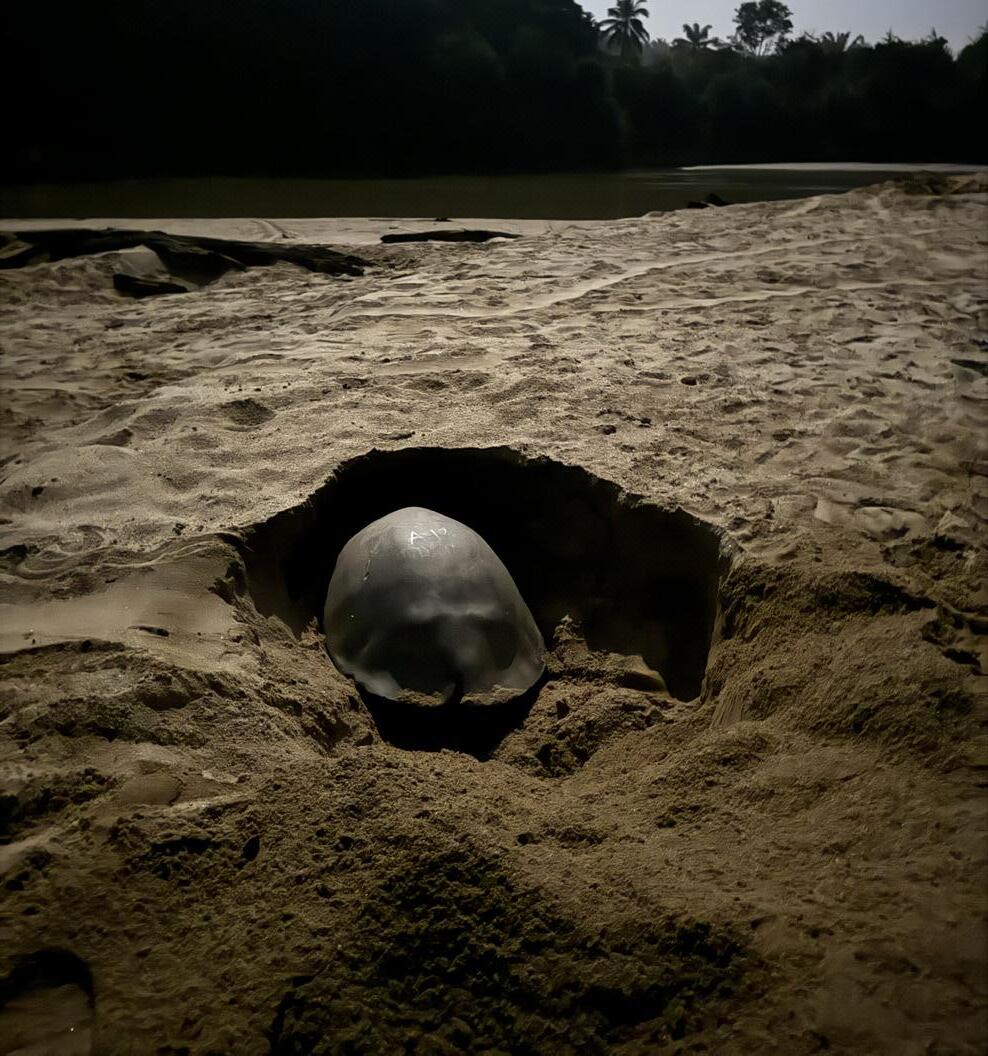
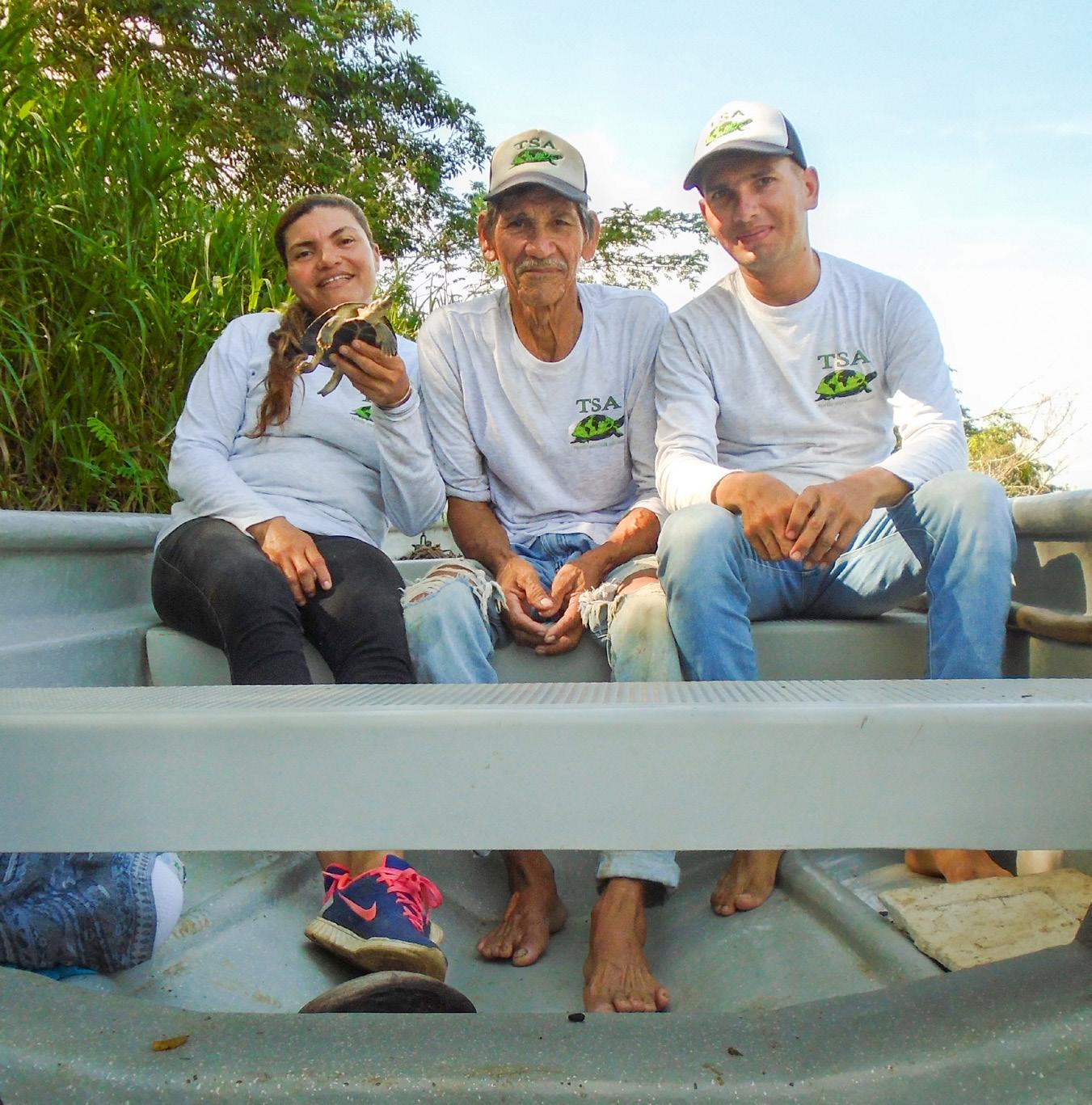
Moisés Hernández
Wildlife Conservation Society/ Turtle Survival Alliance (WCS/TSA)
Colombia Turtle Program
CÓRDOBA, COLOMBIA
Tell us about your history growing up on the Sinú River and encountering the Magdalena River Turtle (Podocnemis lewyana) prior to becoming involved with the WCS/ TSA Colombia project.
Growing up alongside the Sinú River, you learn the basics about the species that inhabit it. The turtle was no exception. But my knowledge of it was very limited. I knew it was part of the system, but I was unaware of the turtle’s importance within it, as well as the risks the species faced. From the age of ten, I accompanied my father to search for nests on the beaches to eat. Over time, I learned to identify where there were egg clutches and it became a common activity to go out and search every year. It wasn’t until
I learned about the program that I realized what I was doing was harmful to the species.
How did you get involved with the conservation of this Critically Endangered turtle, and what is your current role with this program?
In 2018, I was checking the beaches in the middle of the nesting season and I met Luis Carlos Negrette who saw me looking for nests. He approached me and told me about the program, inviting me to learn about the project in Cotoca Arriba. Once I learned more about the species and all the work that was being done to conserve it, I became interested in participating in the protection of the species. They were impressed by my ability to identify nests, and eventually, they invited me to be actively involved in the activities. Nowadays, my role within the program is leading the activities supported by WCS/ TSA. I work not only in the search
for nests during the nesting season but also in the monitoring activity of adult individuals of the species.
What is one of your most memorable moments in what you’ve achieved for the conservation of this species?
For me, the most memorable moment in doing this work comes every year, and that moment is when we release the hatchlings after they are born. Watching them slowly walk towards the river and knowing that you had a hand in making that possible. It’s truly where you realize that all the effort during the search days, waking up early to walk the beaches, collecting the eggs with the utmost care possible, and the subsequent care in the incubator, all of that is contributing to have a positive impact. It is very satisfying to see that you are part of work that generates a positive change. I feel like a defender of the species.
From your perspective, what will it take and what do you want to achieve to see populations of the Magdalena River Turtle thriving once again in the Sinú River?
What the species needs is to face less man-made threats and for public awareness of their harmful impact to the turtle. With increased awareness of the effects of hydroelectric damming and sand mining and the risk they pose to this turtle’s nesting habitat, and by educating people who still consume the turtle’s eggs, we could garner more support for protecting this species. This turtle needs more friends.
Do you have any message for people who are part of this or other communities where there are endangered turtle species?
Do not see species as something foreign; they can contribute much more than you can imagine. These
species at risk can become emblematic of your communities, emblematic to the region in which you live, even emblematic for yourselves. You can be part of the change. I say this from my experience, having evolved from being a consumer to considering myself a defender of the species with which I work.
Tell us a little bit about your background and what led you to become a veterinarian at Zoo Atlanta.
My journey to becoming a veterinarian at Zoo Atlanta began with a deep-rooted passion for wildlife. From an early age, I knew I wanted to work with animals and be dedicated to their study, care, and protection. This eventually led me to pursue veterinary medicine. During vet school, I was accepted into a veterinary student preceptorship at Zoo Atlanta and was immersed in learning about the healthcare of incredible species. I witnessed a dedicated, collaborative team providing world-class care for its animals with an institutional mission focused on wildlife and conservation. Years later, after graduation, my dream came true to return as a veterinarian at this amazing institution.
I have had a particular affinity for turtles and tortoises since I was young. Working at Zoo Atlanta, I am so grateful for our long-standing partnership with the Alliance and the opportunity to become involved with tortoise conservation as a veterinarian. I am continually drawn to the Alliance’s collaborative efforts with zoos, other conservation organizations, and local communities to address the complex
challenges facing endangered turtles and tortoises. Turtle Survival Alliance’s unwavering dedication to turtle conservation worldwide is inspiring, and the organization’s holistic approach to conservation resonates strongly with me.
You participated in the relief efforts of more than 10,000 Radiated Tortoises (Astrochelys radiata) rescued from smugglers in 2018. Since then, you and Zoo Atlanta have demonstrated strong support for the Alliance’s tortoise conservation program in Madagascar. Tell us more about your interest in this species and our program.
My interest in Madagascar has been long-standing and was deepened as an undergraduate while attending Duke University. There, I studied at the Duke Lemur Center and delved into the rich and unique biodiversity of Madagascar. With a fondness for turtles, once I learned of the Radiated Tortoise, how could I not love them? They are beautiful, fascinating, gentle herbivores with endearing demeanors, and are a symbol of Madagascar. Witnessing the unprecedented plight
of these tortoises firsthand and being inspired as part of the massive team effort from Madagascar and across the world left me determined to continue to help however I can.
Given the high conservation priority of this biodiversity hotspot and all the critical work needed there, how would you like to see your institution expand their involvement in Madagascar?
Zoo Atlanta’s support for the Turtle Survival Alliance Madagascar program underscores our shared commitment to safeguarding species and their habitats. Looking ahead at our commitment in Madagascar, I envision a continued partnership with the Alliance and further incorporating Zoo Atlanta’s amazing team of people with diverse expertise to enhance conservation efforts. I also see great opportunity for further support and collaborations with allied groups to link conservation efforts across taxa and to address challenges in Madagascar such as water insecurity, all of which link back to and can enhance Radiated Tortoise conservation.


From left: Kurt measures a young headstarted Gopher Tortoise (Gopherus polyphemus); Kurt releases headstarted Gopher Tortoises into a soft-release pen where they will acclimate and develop home ranges in their new environment.
The 18th annual Behler Turtle Conservation Award honored and celebrated Kurt Buhlmann for his work with wildlife conservation and turtle recovery efforts, in addition to being a founding leader of Turtle Survival Alliance.
Growing up in New Jersey, USA, near major metropolises, Kurt still had wonderful childhood opportunities to search swamps for turtles and hike through woods while flipping logs looking for snakes and salamanders. Spending time out in nature, creating his own adventures, and teaching himself about natural history made Kurt grow up with an appreciation for nature and a serious concern for its well-being.
BALANKurt attended Stockton State College in the Pine Barrens of New Jersey where he earned a B.S. in Environmental Studies, and then a M.S. in Wildlife Sciences at Virginia Tech, where his advisor, Mike Vaughan, assigned him the task of conducting a vertebrate inventory in the New River Gorge National River in West Virginia. The discovery of River Cooters in that river led to a radio-tracking study of their movements and habitat use for his thesis and first major publication in 1991.
While in Virginia, Kurt met Joe Mitchell, who at the time was conducting a statewide survey of amphibians and reptiles. Joe was always willing to actively engage a young, exuberant, perhaps undisciplined biologist and
put him on a path to nature conservation, and so he and Kurt worked together on several rare species, notably Chicken Turtles, Bog Turtles, and Tiger Salamanders. After Kurt completed his Master’s degree, Joe helped him acquire his first real professional position: conducting a survey of the endemic Cow Knob Salamander in the George Washington National Forest. That project led to the designation of a Special Biological Area for that salamander— something Kurt is proud of to this day.
Subsequently, a position as Field Zoologist with the Virginia Natural Heritage Program included designing primary and secondary preserve boundaries for wetlands that the Heritage Program was acquiring for conservation. It was relatively easy to do that to protect water quality, but more frustrating to predict where the turtles or amphibians were or needed to go when isolated wetlands dried seasonally.
Kurt then met Whit Gibbons, who suggested that he could perhaps come to the Savannah River Ecology Laboratory (SREL) as a Ph.D. student at the University of Georgia and study that wetland issue. That opportunity led to an unexpected benefit, as another young ecologist was also working there and pursuing her Master’s degree, studying the ecology of Gopher Tortoises. Whit asked Kurt to help Tracey Tuberville with her field work, where she was working in a remote area of South Carolina. Kurt went there planning to just spend a few days helping her, but they fell in love forever. Those who know Kurt and Trac-

ey realize that they are not only a couple, but a team for turtle and tortoise conservation and recovery.
Completing his Ph.D. in Ecology in 1998 led to an adjunct position as a herpetology instructor at Evergreen State College in Olympia, Washington. There, Kurt recognized that his ability to educate students was rooted in conveying enthusiasm for nature outdoors and less about lecturing in class. He invests in mentoring students who will carry the conservation torch, and although he also enjoys research and publishing, he really wants to see and participate in conservation actions on the ground.
In 1999, the creation of PARC (Partners in Amphibian and Reptile Conservation) led to new collaboration and communication among state and university herpetologists who were similarly interested in applying research to on-the-ground conservation. Kurt found a calling in helping design the PARC Habitat Management Guidelines for Amphibians and Reptiles and an expanded interest in habitat restorations for natural communities, including isolated wetlands and longleaf pine savannas.
Also in 1999, Russ Mittermeier at Conservation International hired Kurt to lead an Amphibian and Turtle Conservation program there. Kurt quickly attained a larger worldwide perspective on amphibian and reptile threats and conservation solutions, and attended the Asian Turtle Trade workshop in Cambodia in late 1999 with Peter Paul van Dijk and Anders Rhodin and others that clarified for many turtle conservationists the emerging global threat to turtles. Concepts such as “assurance colonies” started percolating in the minds of many. A subsequent meeting in Fort Worth, Texas, in early 2001 introduced Kurt to Rick Hudson, whom he then joined as founding Co-Chair of the Turtle Survival Alliance. Later that year, an unprecedented 7,000 rescued Asian turtles were flown from Hong Kong to the United States and processed by the Alliance in Port St. Lucie, Florida. There they were given veterinary care, and distributed to many conservation partners, and in doing so, solidified Turtle Survival Alliance as an organization that continues to make a global difference in turtle conservation and recovery. Kurt is incredibly proud of its success.
Kurt has never viewed what he does as a career; it has always been simply something that he loves. He is happiest and feels most effective when he is helping restore a habitat or protecting turtle nests and hatching turtles for head start programs. Kurt does not see the need for competition among conservation and recovery partners; there is simply too much to do to let competition get in the way. Kurt’s enthusiasm and promotion of collaborations among the many partners engaged in the well-being of turtles is infectious and inspirational, and we thank him for his contributions and wish him the best in his ongoing endeavors on behalf of turtle populations everywhere.
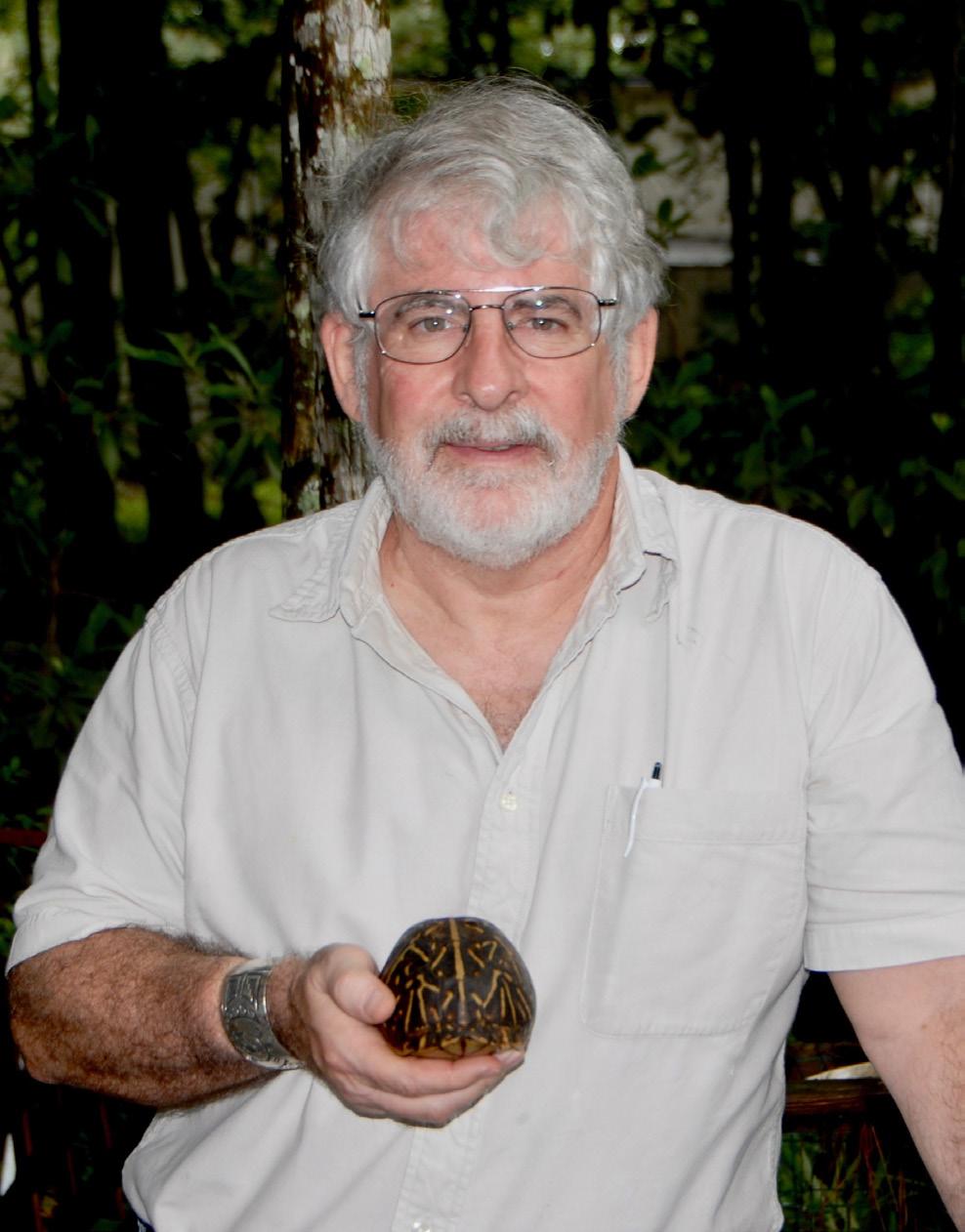
Recognizing Lifetime Achievements, 2023: Ken Dodd, Bruce Bury, Elmar Meier, and Earl Possardt
by ANDERS G.J. RHODINThe Pritchard Turtle Conservation Lifetime Achievement Award honors older or retired later-career individuals who have made major and significant contributions to the turtle conservation and biology community. These awards are also based on open community nominations and final selection by the Behler Award Committee.
Ken Dodd worked for the U.S. Department of the Interior as Herpetologist in the Office of Endangered Species (OES) and as Research Zoologist with the U.S. Geological Survey in Gainesville, Florida. He was also Courtesy Associate Curator of Herpetology at the Florida Museum of Natural History and Courtesy Associate Professor in the University of Florida Department of Wildlife Ecology and Conservation. At OES,

Ken was the listing author for the Desert Tortoise, Plymouth Red-bellied Turtle, Central American River Turtle, and Bolson Tortoise, as well as for critical habitat designations for Hawksbill and Leatherback sea turtles. He played a significant role in excluding farmed Green Turtle products from U.S. markets and in the acquisition of Sandy Point in the U.S. Virgin Islands for nesting Leatherbacks. He has conducted research on Loggerhead Sea Turtles, Flattened Musk Turtles (leading to federal protection), and Florida Box Turtles. His books include The Natural History of North American Box Turtles and Reptile Ecology and Conservation. Ken is past President of The Herpetologists’ League and a longtime member of the IUCN SSC Tortoise and Freshwater Turtle Specialist Group. He maintains a lasting commitment to chelonian research and conservation and an abiding appreciation of those who have dedicated their careers to maintaining turtle diversity, often against incredible odds.
Bruce Bury has studied chelonians for many decades with an emphasis on species in western North America. He has served as the editor for two volumes on North American tortoises, as well as authored a monograph on the Bolson Tortoise and a recent book on the Western Pond Turtle. His field studies have included research on Blanding’s Turtles in Nebraska, Painted Turtles in Washington, Desert and Bolson tortoises in Mexico, and Berlandier’s Tortoise in Texas. In 1972, he was hired as the first full-time herpetologist in the U.S. Fish and Wildlife Service and served in Washington, D.C., at the National Museum of Natural History. He subse-

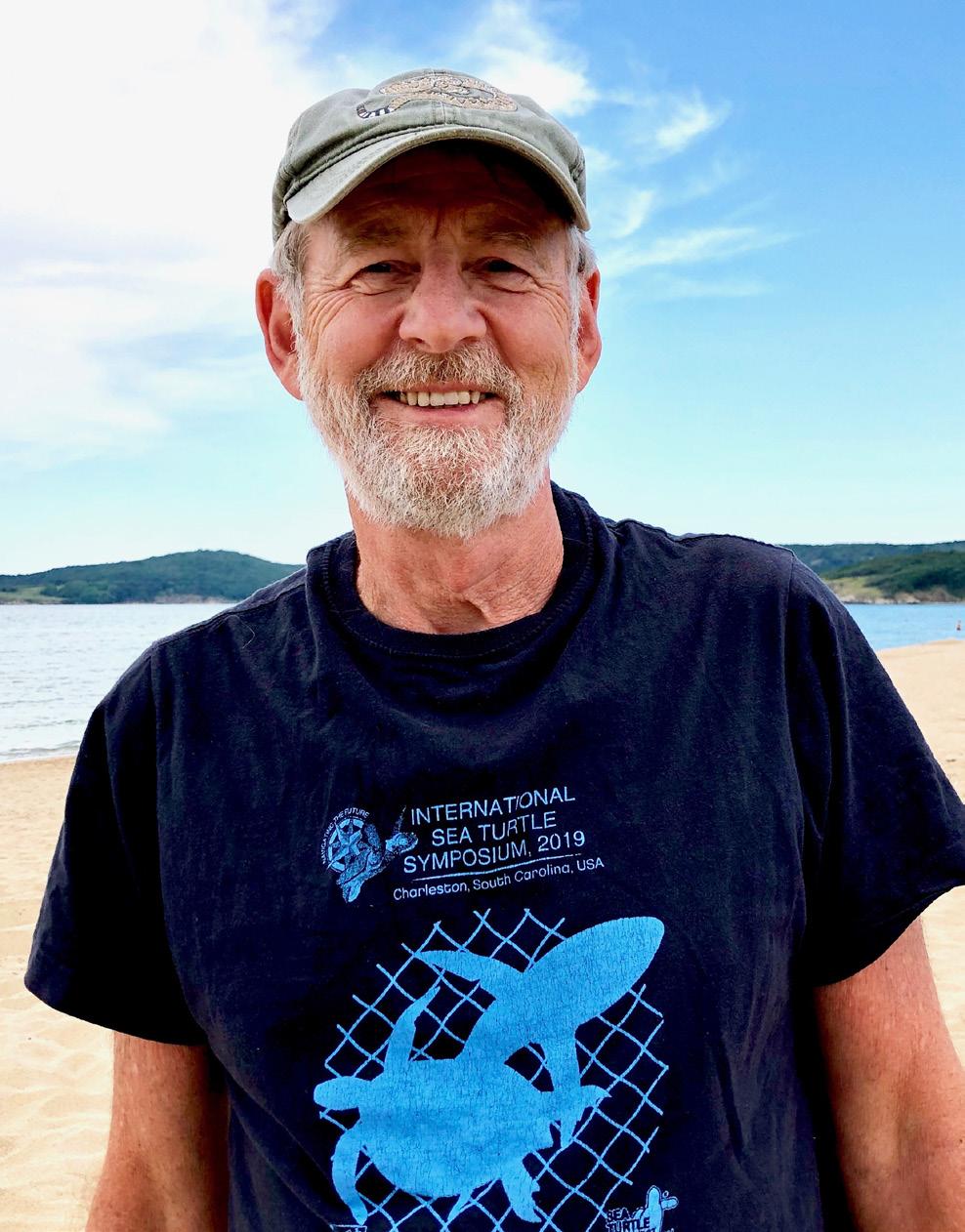
quently transferred to duty stations in Colorado and Oregon to be more directly involved in field studies. His research has examined impacts of off-road vehicles on desert ecosystems, logging on northwestern forests, and many projects on threatened species. Although retired, he continues to write and edit studies on chelonians and other taxa. He is Editor-in-Chief of Herpetological Conservation and Biology, which started in 2006 to increase outlets serving natural history and field ecology and conservation efforts, especially descriptive investigations and management studies.
Elmar Meier from Münster, Germany, is a private herpetoculturist who has specialized in the captive care and breeding of highly endangered freshwater turtles, notably various species of Asian box turtles of the genus Cuora. In 1997, he proposed a captive breeding project to be carried out in conjunction with the German NGO Zoologische Gesellschaft für Arten- und Populationsschutz (ZGAP) and the Münster Allwetter Zoo. He committed his private stock of Asian turtles to the project for 20 years and to caring for the animals at the Zoo free of charge on a voluntary basis. The resultant International Center for Turtle Conservation opened at the Zoo in 2003, and the Turtle Conservation Fund, with its leaders from the Turtle Survival Alliance and the IUCN SSC Tortoise and Freshwater Turtle Specialist Group, held one of its first funding meetings there shortly thereafter. Elmar’s efforts have led to more than 700 turtles being hatched from 17 species and subspecies of critically endangered turtles, and these offspring have been trans-
ferred to 94 zoos and private keepers to establish new breeding groups. His most important contribution has been the breeding and prevention of extinction of Zhou’s Box Turtle (Cuora zhoui), a species perilously close to extinction, with no wild populations known.
Earl Possardt worked for the U.S. Fish and Wildlife Service (USFWS) for 44 years and for the last 30 years was dedicated to and focused on turtle conservation, initially within the southeastern U.S. and then primarily internationally. He was instrumental in establishing the Archie Carr National Wildlife Refuge to protect some of the highest density Loggerhead Sea Turtle nesting beaches in the world. He led efforts within the USFWS and collaborated with friends and colleagues to secure Congressional authorization for the creation of the Marine Turtle Conservation Act (MTCA) Fund to institutionalize and internalize a marine turtle conservation program within the USFWS with dedicated funding. He administered this program during the last 20 years of his career which grew to support about 45–50 projects in over 35 countries each year, with a strong focus on building conservation capacity within countries and regions. In 2019, working with the IUCN SSC Tortoise and Freshwater Turtle Specialist Group, his vision to include tortoises and freshwater turtles within the MTCA Fund was finally realized with the passage of Congressional amendments to the MTCA. These expanded the program to an additional 10-12 MTCA projects each year focused on tortoise and freshwater turtle conservation projects in Asia, Central and South America, and Africa.

With support from the Turtle Conservation Fund and others (Mohamed bin Zayed Species Conservation Fund, U.S. Fish and Wildlife Service, Turtle Conservancy, Chelonian Research Foundation, Re:wild, Turtle Survival Alliance, CONABIO in Mexico, and the Comité organizador del XII Congreso Latinoamericano de Herpetología in Bolivia), the IUCN SSC Tortoise and Freshwater Turtle Specialist Group (TFTSG) recently initiated the task of assessing or re-assessing the IUCN Red List conservation status of most of the tortoises and freshwater turtles of the Americas, from Canada
At the Annual Symposium on the Conservation and Biology of Tortoises and Freshwater Turtles, Turtle Survival Alliance and IUCN SSC Tortoise & Freshwater Turtle Specialist Group honor those students with the best paper and poster presentations as determined and selected by a diverse review committee of established turtle experts. These awards are present-
and the United States through Mexico and Central America, and all of mainland South America.
Three Red Listing workshops were held in 2023: Mexico City, Mexico; Charleston, South Carolina; and Cochabamba, Bolivia, with total participation by about 80 turtle specialists facilitating collegial information-sharing, collaboration, and networking. With a goal of assessing 127 species by the end of 2024, the TFTSG has already assessed 91 species. Although assessments are not yet finalized for all these species, and some of the current drafts may undergo further change as we continue our review, we can provide preliminary results and analysis of trends.
Of the 91 species assessed so far, 51 remain at the same status level as when they were previously assessed and five species are downlisted to a lower threat category, but not because they have necessarily improved, but rather because they are now better understood with more data, indicating that they are actually under less threat than previously presumed. The rest, 35 species in all (nearly 40%), are uplisted into higher threat categories, indicating that the threats from past, ongoing, and predicted habitat loss and degradation, unsustainable exploitation, and climate change are increasingly affecting turtle species here in the Americas almost as much as in Asia and elsewhere. Three species are being added to the list of Critically Endangered species in the Americas: Zulia Toad-headed Turtle (Mesoclemmys zuliae) from Venezuela, and Coahulian Box Turtle (Terrapene coahuila) and Cuatro Ciénegas Slider (Trachemys taylori), both from Cuatro Cienégas in Mexico.
As well as being gatherings to effectively assess conservation status and prospects across the whole distribution area of Western Hemisphere tortoises and freshwater turtles, these workshops were also highly effective in generating discussions and establishing and strengthening contacts and catalyzing new collaborations and understanding among the many participating experts.
ed annually and are funded by Anders Rhodin and the Chelonian Research Foundation. The awards help inspire and validate the work and presentation efforts of the next generation of turtle conservationists and biologists and help promote this vitally important lifeblood of not only the awarding organizations, but also of the wider turtle conservation and biology community. Over 17 years since 2006, a total of 65 students from 16 nations (40 from the U.S., 25 international) have been honored, for a total of nearly $25,000 awarded. In 2023, four students were honored:
• Ryan Rimple, University of Georgia, Georgia, United States (Best Paper)
• Anne-Sophie Le Gal, University of Perpignan, Northern Catalonia, France (Runner-up Best Paper)
• Faith Kuzma, Grand Valley State University, Michigan, United States (Runner-up Best Paper)
• Shelby Truckenbrod, Nicholls State University, Louisiana, United States (Best Poster)
The Disney Conservation Hero award recognizes local citizens for their commitment to save wildlife, protect habitats and inspire their communities to take part in conservation efforts to create a healthier home for people and wildlife. Recipients from around the world were nominated by nonprofit environmental organizations, and each honoree and their nominating organization will share a $1,500 award from the Disney Conservation Fund.
Disney Conservation is committed to saving wildlife and building a diverse global community inspired to protect the magic of nature together. Since 1995, the Disney Conservation Fund has directed more than $120 million to support nonprofit organizations working with communities to save wildlife, inspire action and protect the planet, and has honored more than 200 Conservation Heroes for their extraordinary conservation efforts.
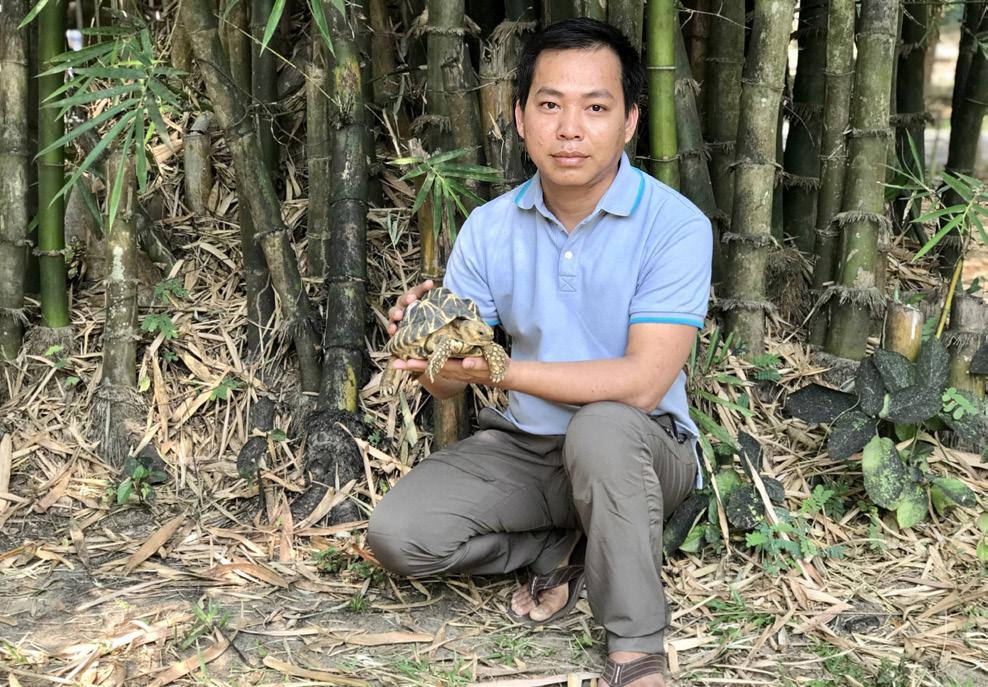
Raised at the Shwe Settaw Wildlife Sanctuary in Myanmar where both his father and aunt had long, impactful careers, Swann followed in his family’s footsteps to dedicate his life to protecting wildlife. His stellar performance and unbridled enthusiasm throughout schooling and training secured him a research assistant position with Wildlife Conservation Society and Turtle Survival Alliance, and later a promotion to oversee the Burmese Star Tortoise (Geochelone platynota) reintroduction and conservation program at the sanctuary. Already an exceptional and dedicated leader, Swann’s selfless devotion shone after the outbreak of Covid-19 in Myanmar and the unstable situation that followed, when he and his team voluntarily elected to remain in the field caring for captive tortoises, monitoring reintroduced tortoises and conducting anti-poaching patrols to ensure the program continued and one of the world’s most critically endangered tortoise species remained protected. Their presence enabled nearly 1,000 captive-bred tortoises to be returned to the wild during the pandemic, leading to an overall total of more than 2,000 tortoises reintroduced under Swann’s leadership.
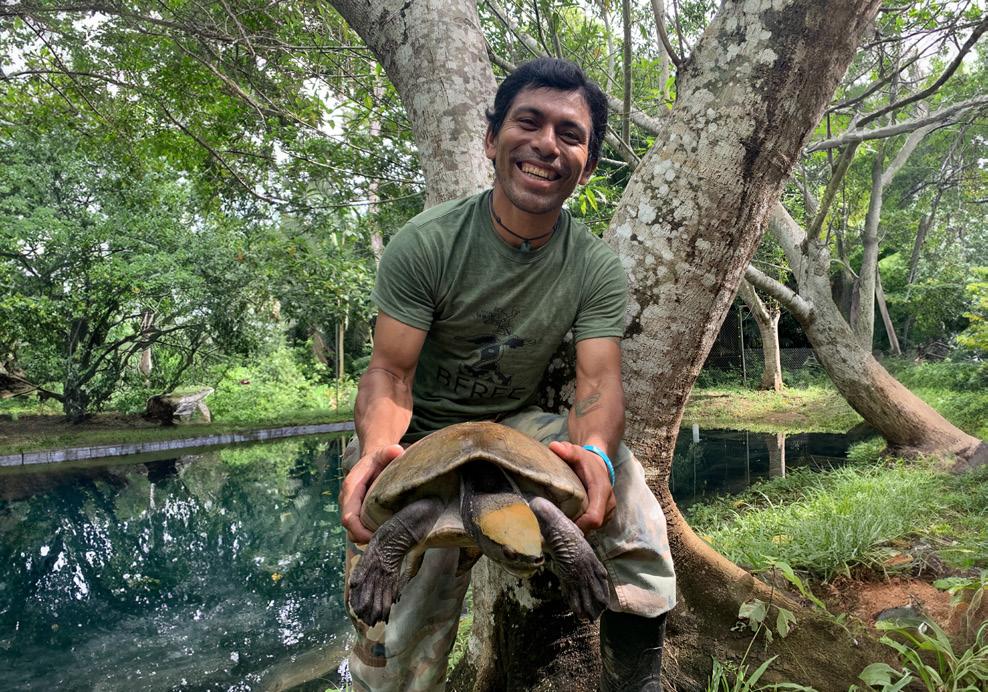
Thomas Pop is the manager of the Hicatee Conservation and Research Center (HCRC). In 2022, Tom was jointly nominated by the Belize Foundation for Research & Environmental Education (BFREE) and Turtle Survival Alliance for this award. Tom has been recognized for over a decade of tireless efforts to conserve the critically endangered Central American River Turtle (Dermatemys mawii), called Hicatee in Belize. Tom embodies the essence of a naturalist, his breadth of knowledge which spans across various taxa is exceptional. For Tom, wildlife preservation and nurturing the next generation of conservationists aren’t merely tasks; they’re a way of life. His passion transcends mere profession, reflecting a deep-seated commitment ingrained in every aspect of his being. His unwavering dedication has served as an inspiration to many. To date, Tom’s tireless efforts have contributed to 1,777 hatchlings being produced at the HCRC and 514 captive-reared juveniles being released into the wild in Belize.

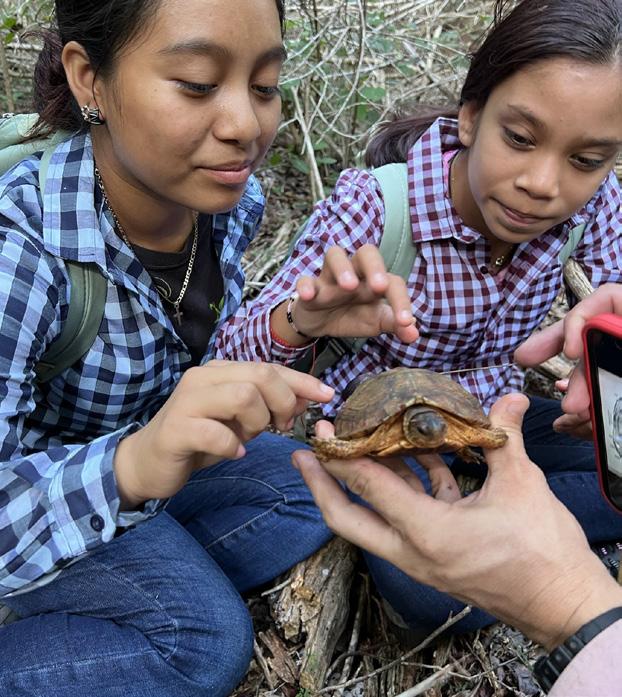


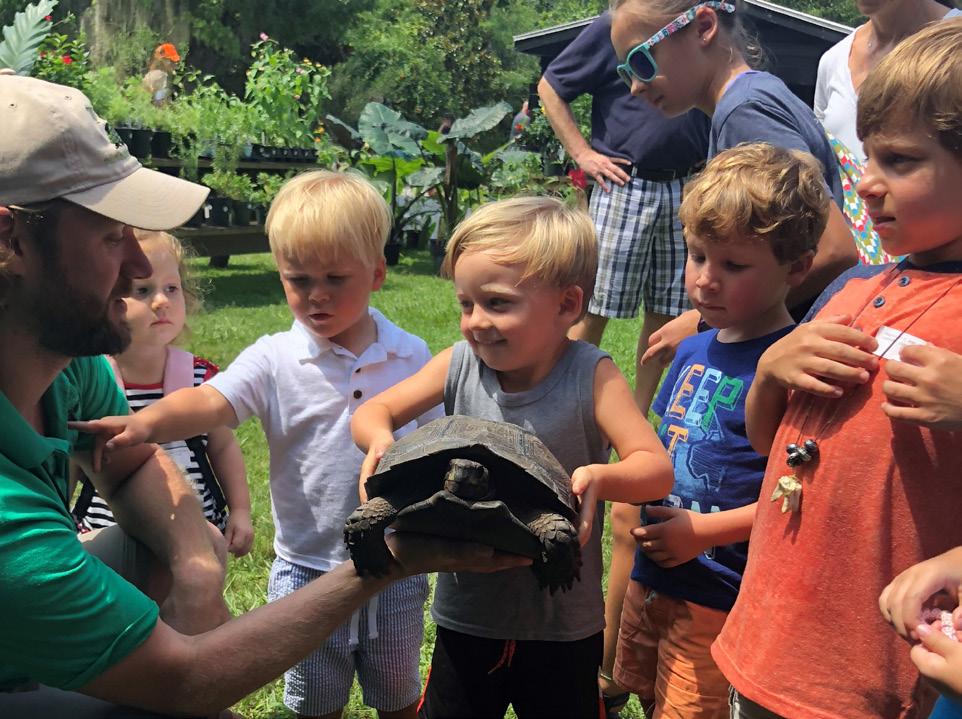

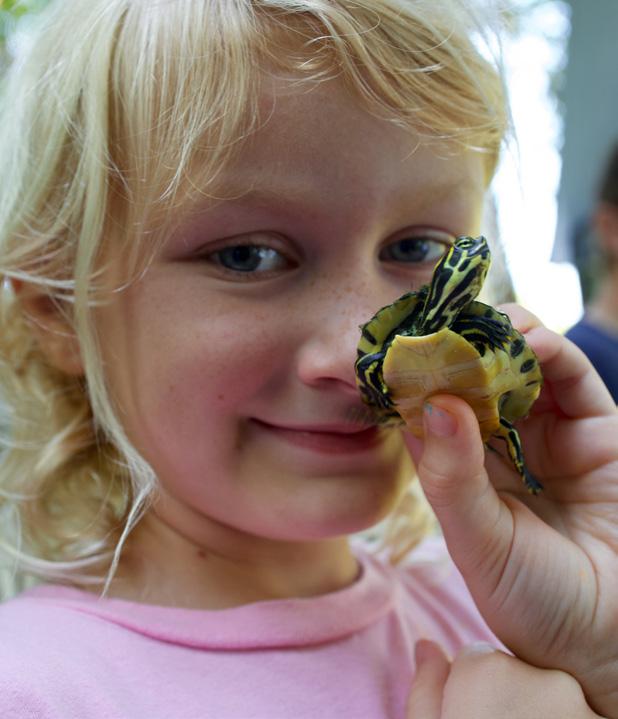
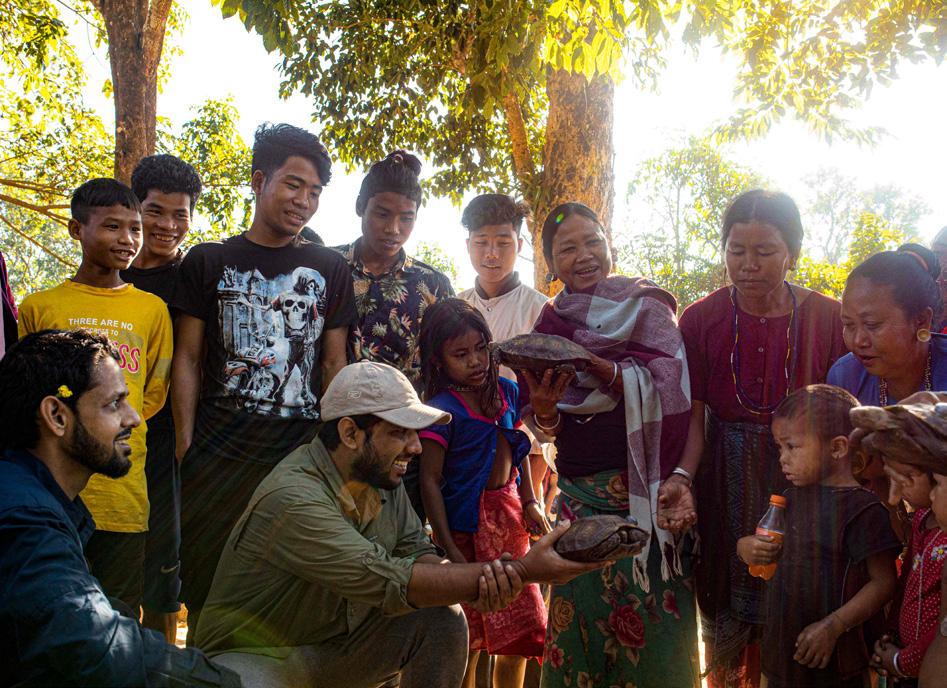
Engaging people of all ages is foundational to the survival of turtles and tortoises, and few things have a greater impact on conservation than education. That’s why we created the Turtle Survival Alliance Outreach Experience. The tailored program allows us to reach audiences of all sizes, anywhere on the globe, from grade school and university classes to civic groups, nonprofits, and activity clubs. We strive to spark curiosity and enthusiasm in participants across the world, inspiring action and engagement in the world of conservation. We hope you’ll join us in the next exchange of turtle knowledge!
To request a virtual or in-person Outreach Experience for your class, group, or company, contact Jordan Gray at jgray@turtlesurvival.org.
There were 27 Drink Beer. Save Turtles.® events between October 1, 2022 - December 31, 2023, where we brought together passionate community members to raise their glasses to turtle conservation. We want to give a huge thank you to the breweries, taprooms, chapters of the American Association of Zookeepers, several zoological and herpetological societies, fantastic volunteers, and awesome attendees who gathered together across the country to raise awareness and funds for our conservation efforts.













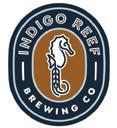






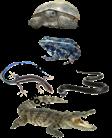























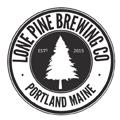



We wish to acknowledge the individuals and organizations who donated to support Turtle Survival Alliance between October 1, 2022, to December 31, 2023.
$100,000+
Alan and Patricia Koval Foundation
Anonymous
Gregory Family Charitable Fund
United States Agency for International Development (USAID)
U.S. Fish and Wildlife Service Division of International Conservation
$50,000 - $99,999
Columbus Zoo and Aquarium
Critical Ecosystem Partnership Fund
Dennler Family Fund
$25,000 - $49,999
Aktionsgemeinschaft Artenschutz e.V.
Association of Zoos & Aquariums (AZA)
Chuck & Ernestina Kreutzcamp Foundation
Critical Ecosystem Partnership Fund (CEPF)
Marc Dupuis-Desormeaux and Susan Rimmer
David and Jean Hutchison
Jacksonville Zoo and Gardens
Mandai Nature
John Mitchell
Ocean Park Conservation Foundation
Sandra J. Moss
TC Energy Foundation
Tortuga Foundation
Zoo Knoxville
$10,000 - $24,999
Anonymous (2)
The Cynthia and George Mitchell Foundation
Desert Tortoise Council, Inc.
Detroit Zoo
Felburn Foundation
Fort Wayne Children’s Zoo
William and Kathleen Holmstrom
David and Jean Hutchison
John Iverson
Meredith Keen/Meredith Keen Charitable Gift Fund
Mohamed bin Zayed Species Conservation Fund
William and Elisabeth Parker
People’s Trust for Endangered Species
Saint Louis Zoo
San Diego Zoo Wildlife Alliance
Stuart Salenger Foundation Inc.
TC Energy Foundation
Topeka Zoo and Conservation Center
Roy Young
Zoo Atlanta
Zoo Med Laboratories, Inc.
$5,000 - $9,999
Deborah Behler
Cincinnati Zoo and Botanical Garden
Cleveland Metroparks Zoo
Dallas Zoo
The Daniel & Nicole Voss Charitable Fund (National Philanthropic Trust)
Disney’s Animal Kingdom - Disney Conservation Fund
Christian Fischer
Gail Gazda
Paul Gerard III and Jacqueline Gerard
Jill Jollay
Ilana Miller and Josh Dale
Milwaukee County Zoo
Nashville Zoo at Grassmere
Post and Courier Foundation
Riverbanks Zoo & Garden
Santa Fe College Teaching Zoo
Sedgwick County Zoo
David Shapiro
Toronto Zoo
Zoofari Parks, LLC
Zoological Society of NJ, Inc.
$1,000 - $4,999
AAZK St. Louis Chapter
Alberts Family Charitable Fund
Amazon Smile
Birmingham Zoo
Ellen Anderson
Andrew Sabin Family Foundation
Animal Survival International
Anonymous (4)
Aquazoo Löbbecke Museum
The Arne Lillehamer Foundation
Tab Atkins
Alvin Atlas
Birdie Bailey
David Barker
Baton Rouge Zoo
Beardsley Zoo
Ellen and Guillermo Bernal
Brodsky Charitable Foundation Trust
Jeff Bruninga
Buffalo Zoo
Canteen, LLC
John Clark Cassady
William and Jan Cato
Catoctin Wildlife Preserve
Karrie Chen and Thomas Jacoby
Chuck’s Hop Shop
Dave Collins
Columbus AAZK
Justin Congdon and Nancy Dickson
John Daigneault
Dallas World Aquarium
Jackie Daniel
Robert Davey
Robin de Bled
Dieren Park Amersfoort Wildlife Fund
Aaron Dodson
Heather, Steven, and Grace Downey
Michael Dreslik
Dutch-Belgian Turtle Society (NBSV)
Tatyana Elefante
Elizabeth C. Bonner Foundation
Johannes Els
Fresno Chaffee Zoo
Curt Fuhrmann
Whit Gibbons
Jeremy Geiger
Give Lively Foundation
Whitney Green
Cris Hagen
Michael Hasselbring
Norbu He
William Jacobs
Joanna Foundation
John R Woods Foundation
Howard Johnston
Jill Jollay
Kansas City Zoo
Nancy Karraker
Lisa Kole
Krause Family Charitable Foundation
Landeshauptstadt Duesseldorf
Lee G. Simmons Wildlife Safari Park
Lisa Lemza and Michael Shillinger
Paul Licht
Jackie Lindner
Little Rock Zoo
Ingrid and Anthony Lombardino
Luther King Capital Management
Jeff Mace
Julia Maitre
Martin House Brewing Company
Maryland Zoo
The Merck Foundation
George A. and Poppy Valentina Meyer
Amanda Michael
Sy Montgomery
Moody Gardens, Inc.
Tom Motlow
Celeste Muller
North Carolina Zoological Society
Orion Consulting Group, Inc.
Daniel Pearson
Peeling Productions
Karri Peppin
Phoenix Zoo
Re:wild
Anders Rhodin
Roger Schat
The Schechter Foundation
Jamie Sincage
Frank and Kate Slavens
SOCO AAZK
Spoonwood Brewing
St. Augustine Alligator Farm Zoological Park
Brett Stearns
Michael Stepniewski
Stoeher Family Trust
Tailgate Brewery LLC
Tennessee Aquarium
The Buffalo Zoo
The Honolulu Zoological Society
Douglas Trainor
Bradley Tuminello
Turtle Conservation Fund
The Quixotic Fund
Virginia Aquarium & Marine Science Center
Susanne and Harold Wahlquist
Angela & Andrew Walde
Walde Research & Environmental Consulting
Bob Walker
WAVE Foundation
Bruce Weber
Bruce Weissgold
Wildlife World Zoo and Aquarium
Mark Williams
Diane Yoshimi
Alan Zaslow
Zoological Association of America
BFREE (Belize Foundation for Research & Environmental Education)
Bill Hawthorne Photography
Fort Worth Zoo
Limehouse Produce
Mazuri Exotic Animal Nutrition
Ny Aina Tiana Rakotoarisoa
Bonnie Raphael
Salesforce
SWCA Environmental Consultants
Tracks Data Solutions
Wildlife Conservation Society
Zoo Med Laboratories, Inc.
Susanne and Harold Wahlquist
Salesforce
SWCA Environmental Consultants
Tracks Data Solutions
Wildlife Conservation Society
Zoo Med Laboratories, Inc.

“I’m all in with Turtle Survival Alliance, not just with my wallet but with my heart and expertise, to give turtles a fighting chance. What drew me in was their work with assurance colonies and in-country programs which are crucial for stopping turtle extinctions worldwide.”

“When I
founded Turtle Survival Alliance more than 20 years ago,
I could only dream
of the
incredible impact it would have on saving some of the world’s most endangered and vulnerable creatures. Leaving a legacy is a profound way to ensure that our shared vision endures beyond our lifetimes.”
What kind of planet do you want to leave behind for your family and future generations?
Turtles have lived for 260 million years and endured multiple catastrophic mass extinctions. Every year, countless turtle species face the threat of extinction due to habitat loss, illegal trade, and various environmental challenges. The Alliance’s science-based work in safeguarding their habitats, implementing breeding and reintroduction programs, and combating wildlife trafficking has never been more critical.
Join the Legacy Circle.
If you have already included Turtle Survival Alliance in your will or would like to learn more about planned giving options, please let us know by emailing development@turtlesurvival.org.
John Whitfield Peninsula Cooter (Pseudemys peninsularis)Turtle Survival Alliance is proud to acknowledge the following organizations that make our work possible. The organizations listed here provide a range of services supporting our mission, including guidance, networking, strategic planning, funding, husbandry, rescue, animal management, marketing and public relations, field research, logistical and technical support, salaried positions, and other resources.










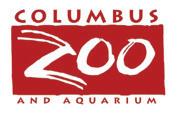



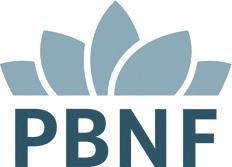
















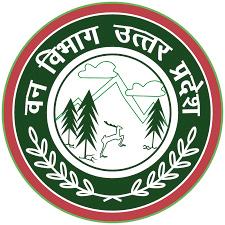
















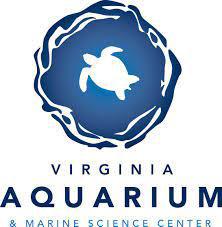














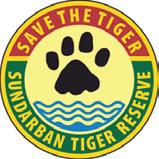






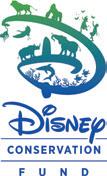
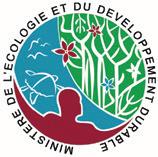

















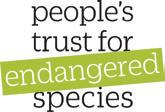





Invest in the solution to zero turtle extinctions in the 21st century and realize a planet where turtles thrive in the wild, and are respected and protected by all humans.
Your support is their survival. Please scan the QR code to make a donation.

Check out new Turtle Survival Alliance merchandise in our online store. Profits from our merch fund our important conservation work. Represent your love for turtles, while supporting our mission!
